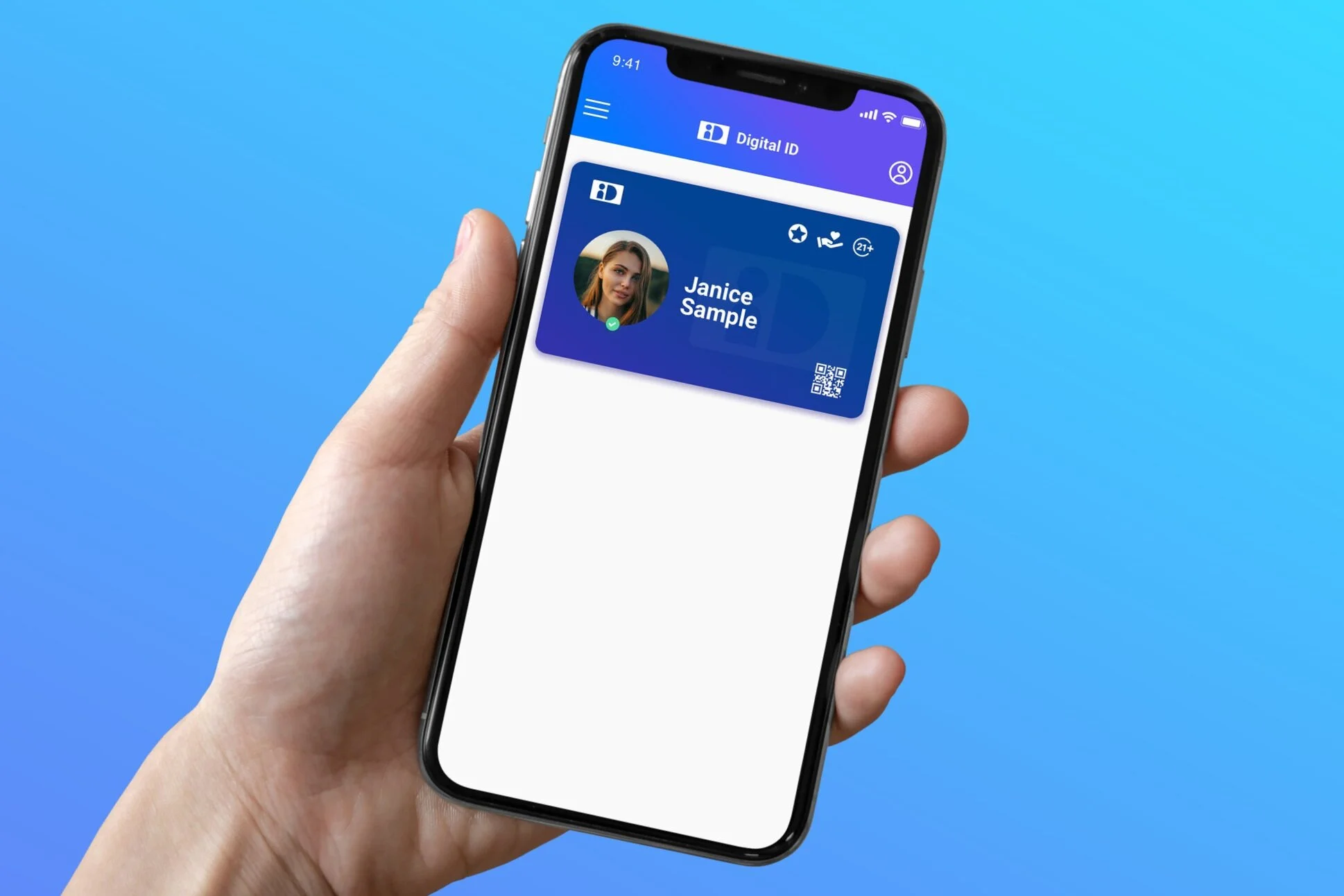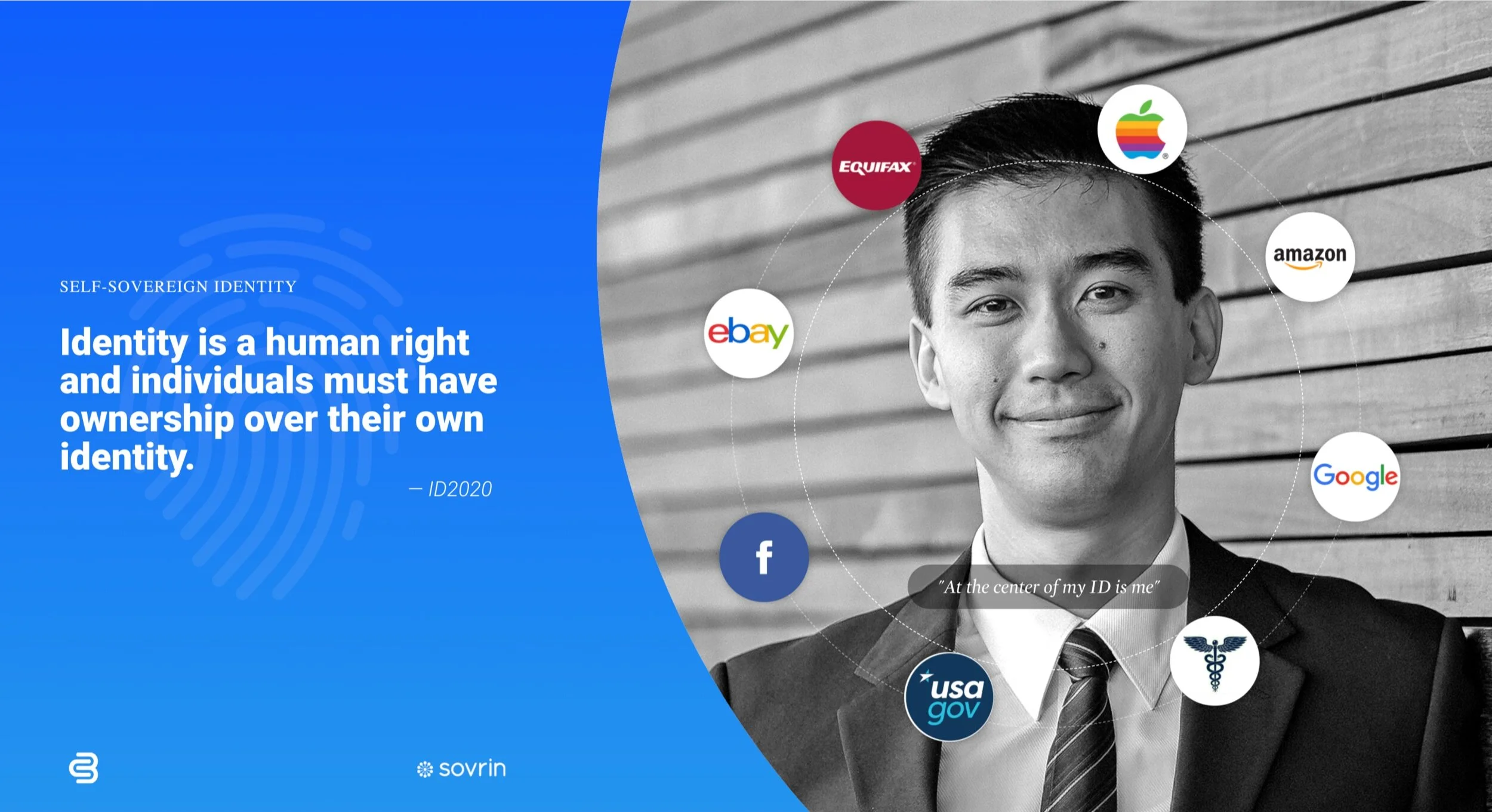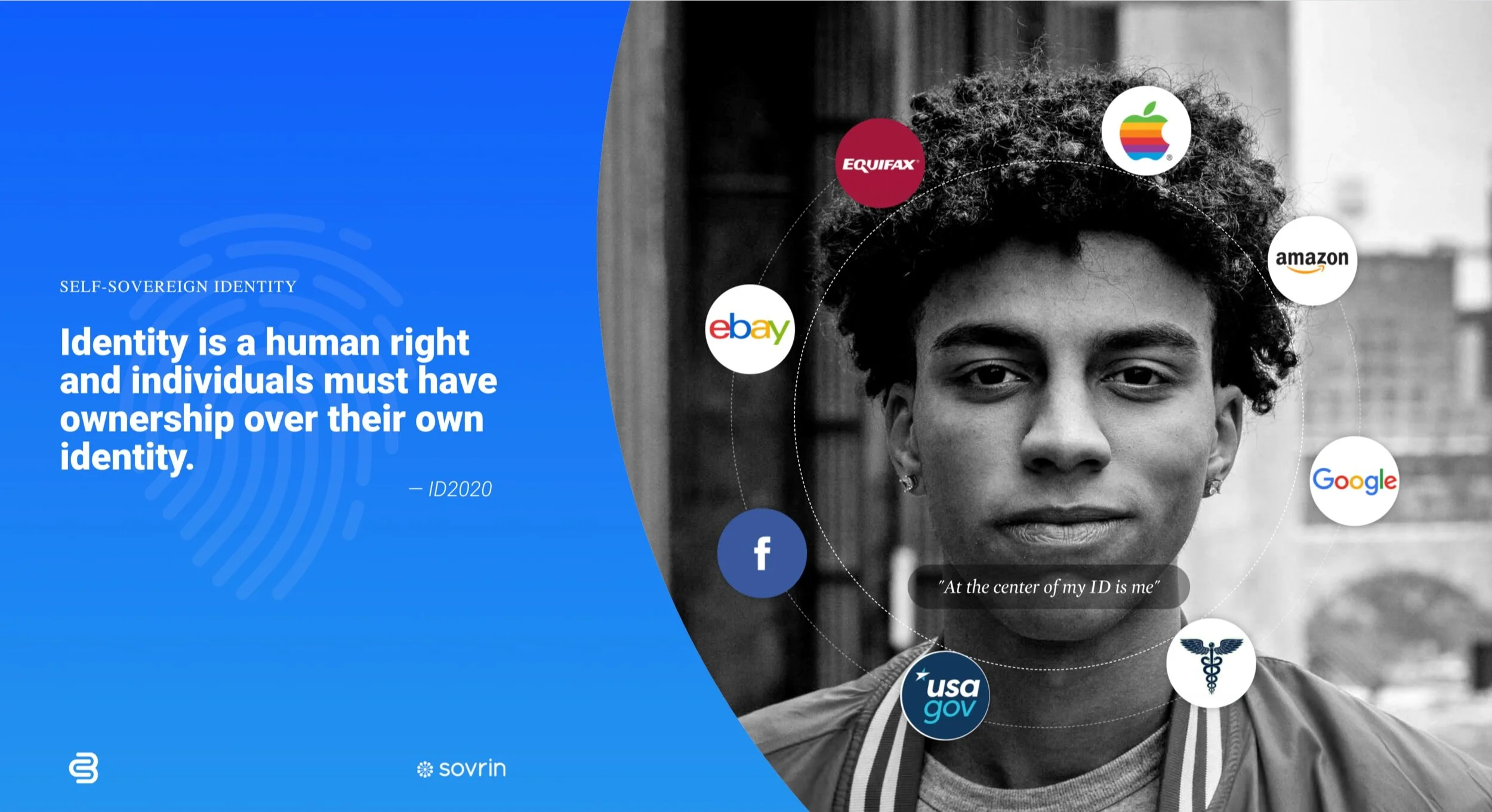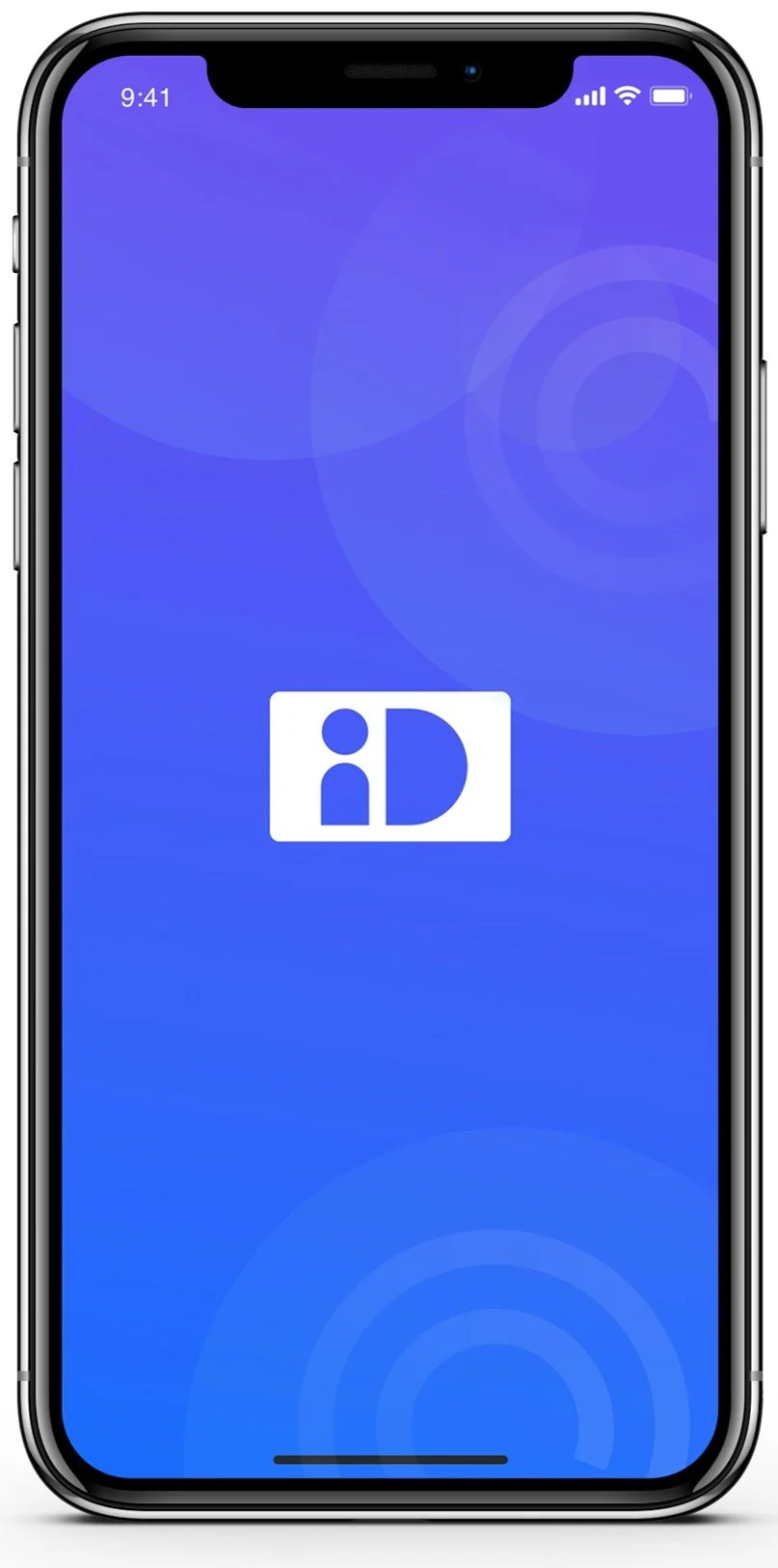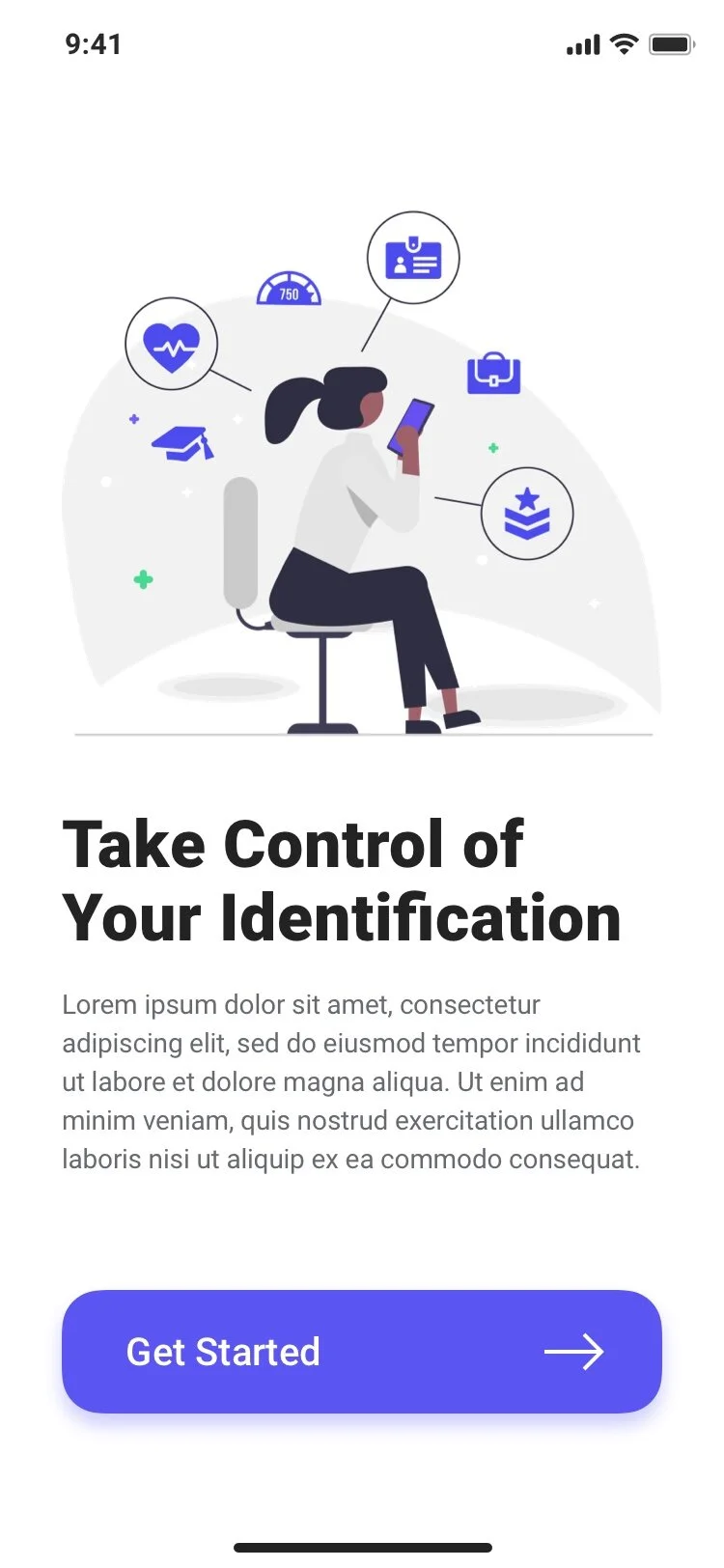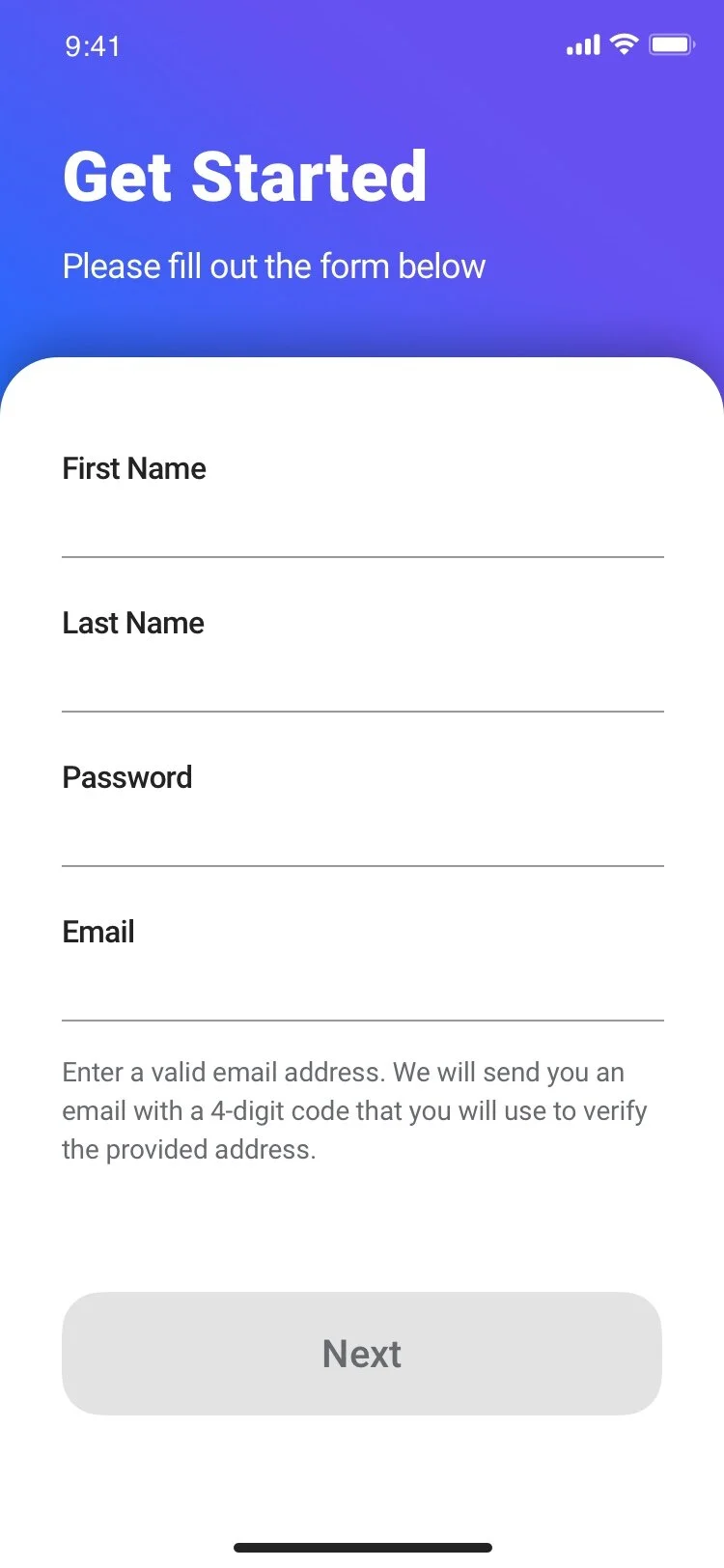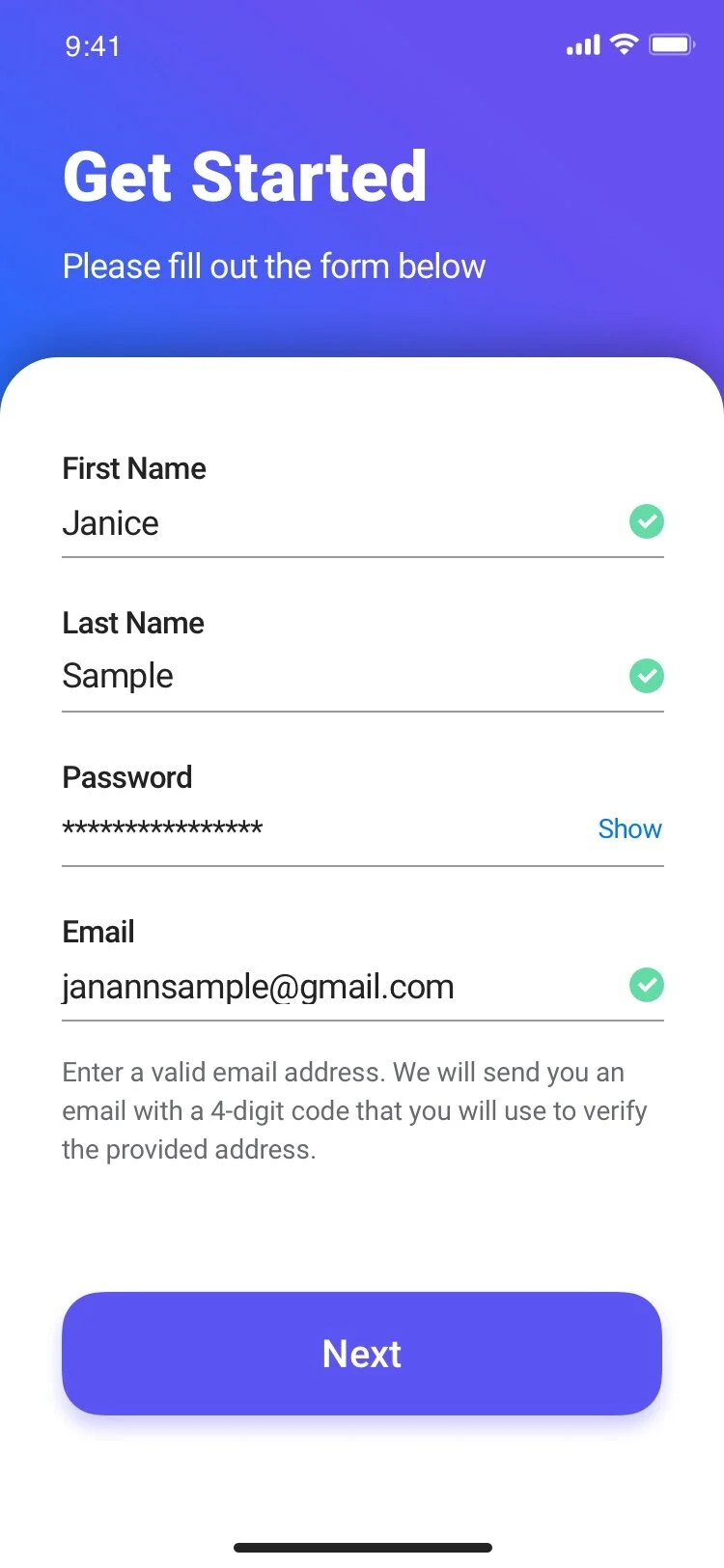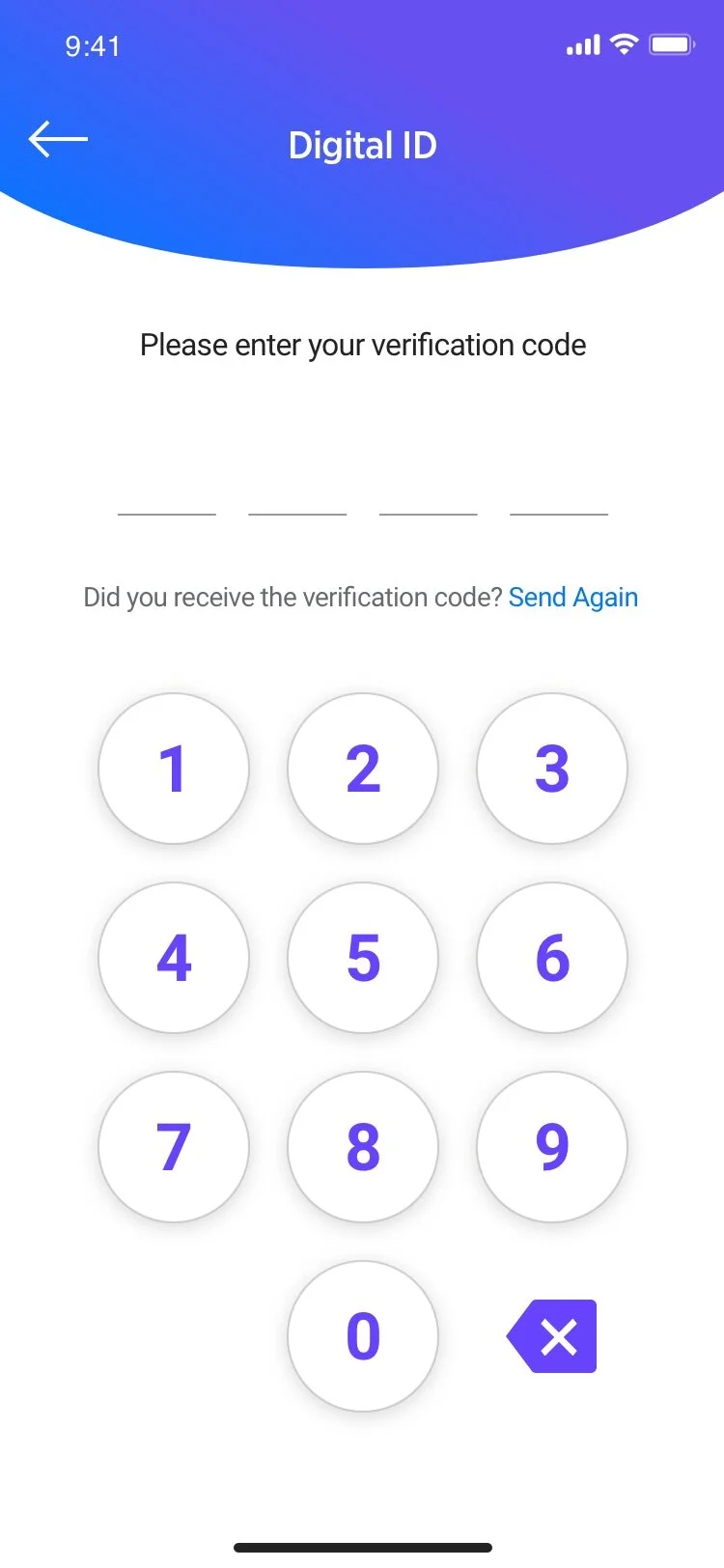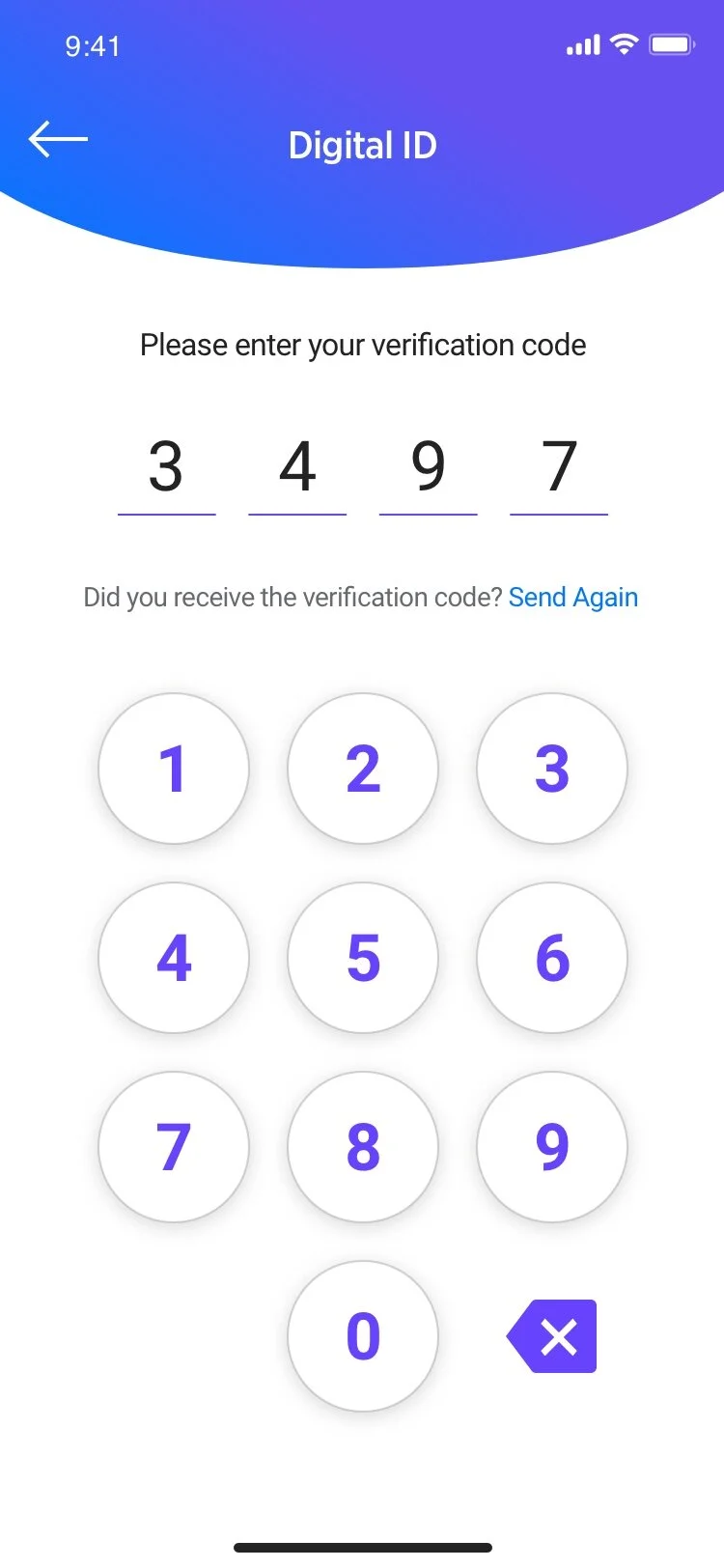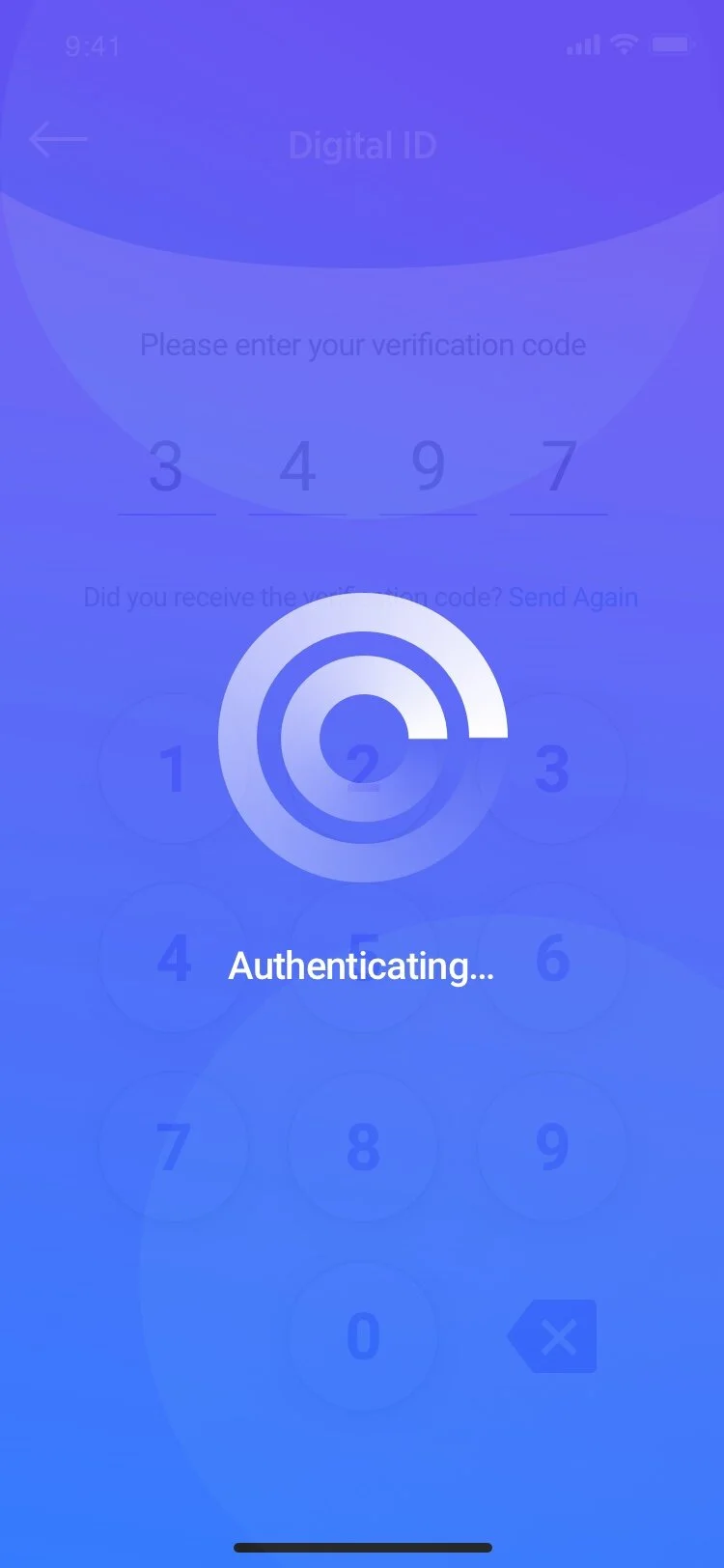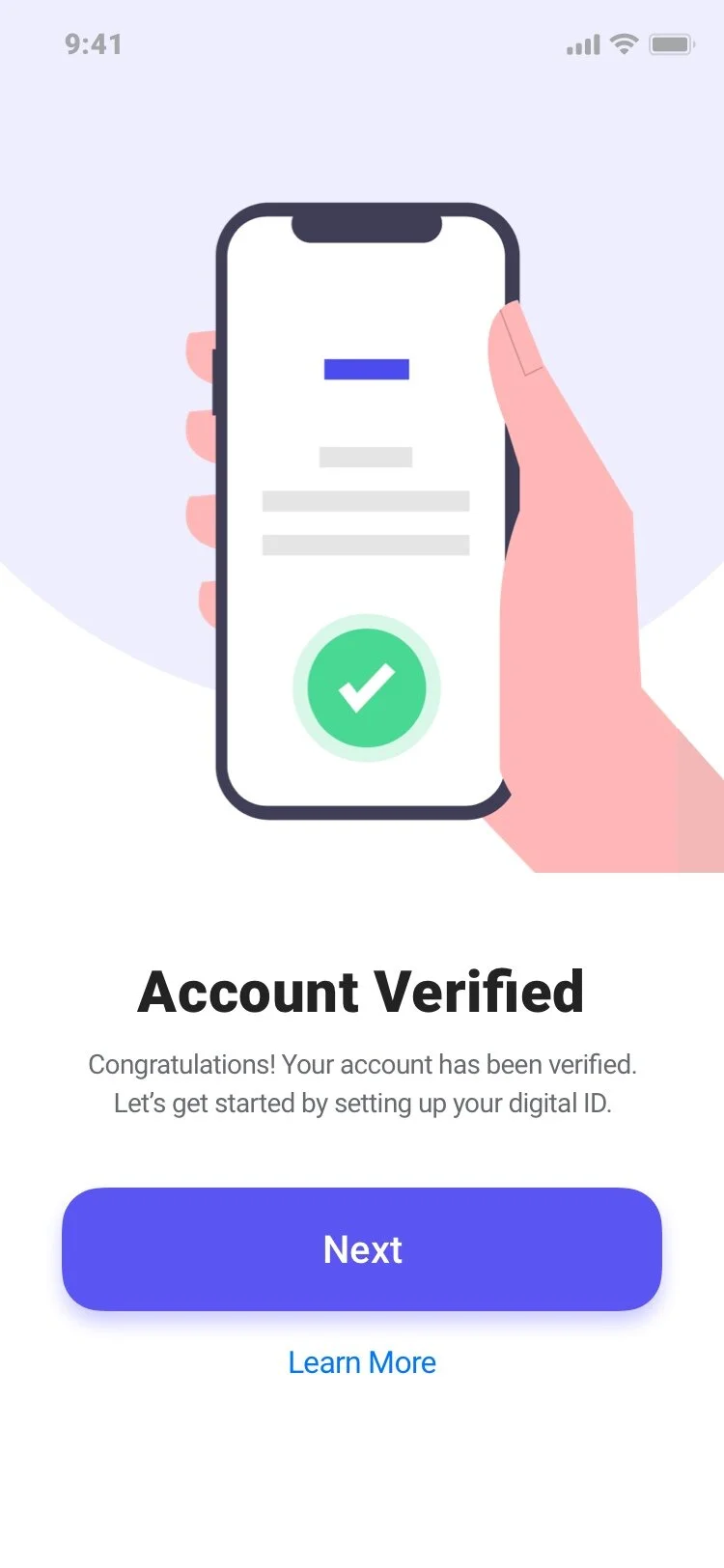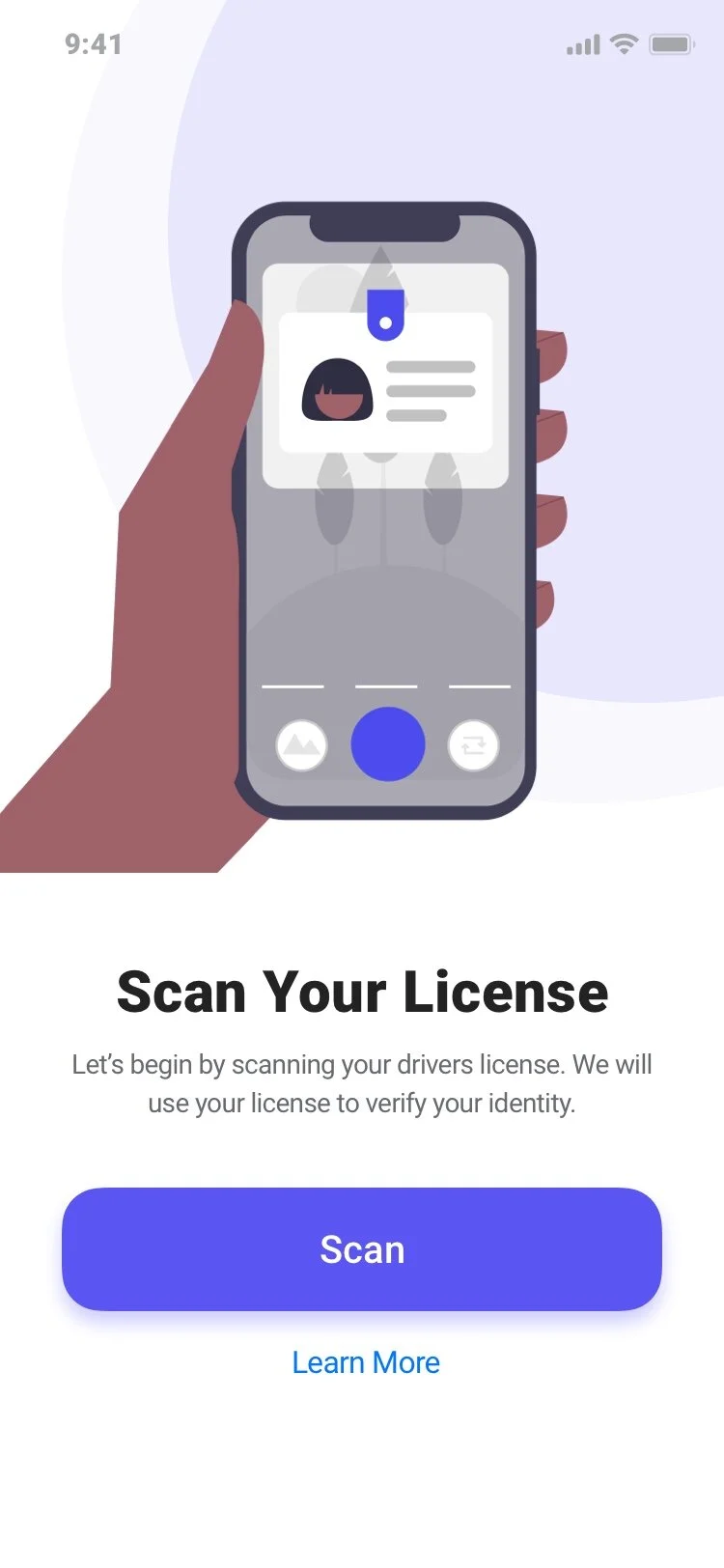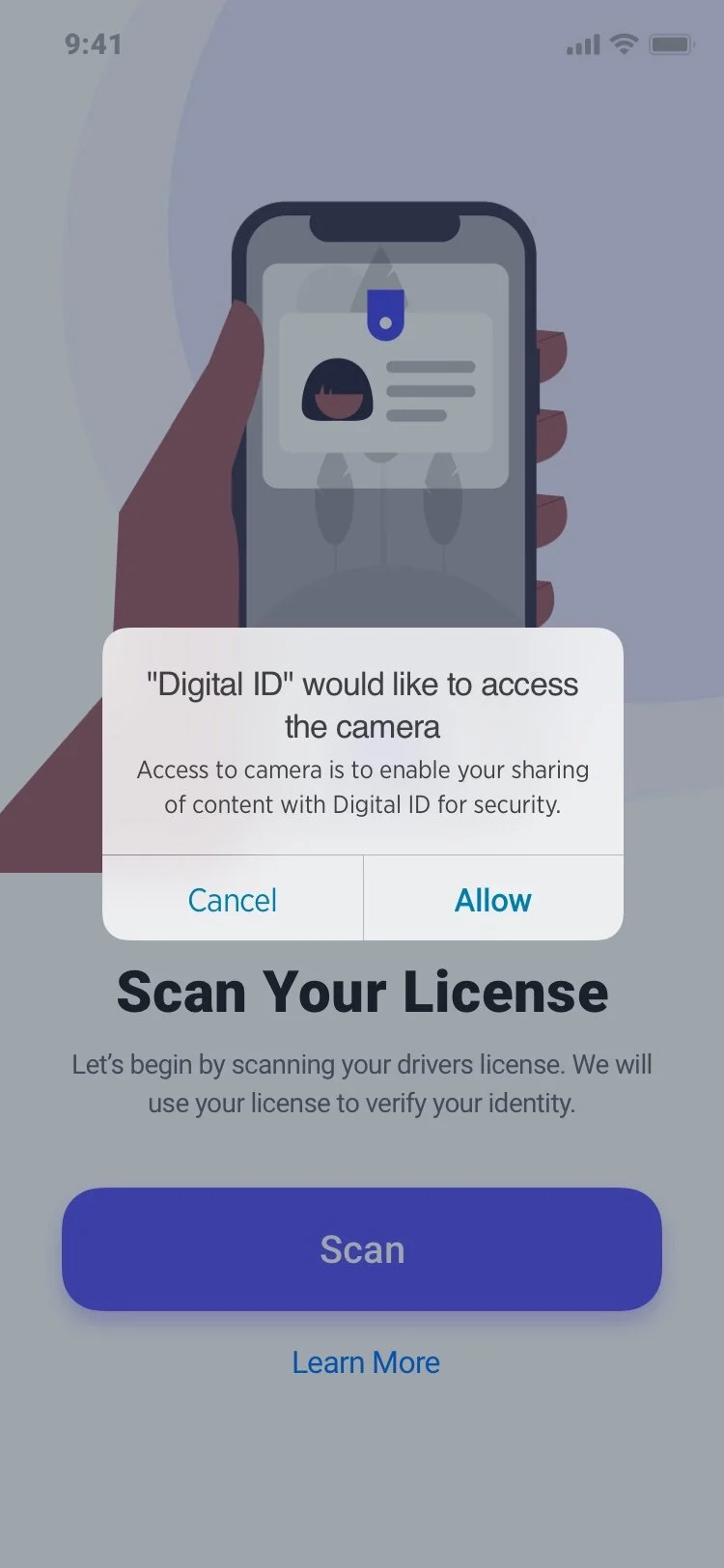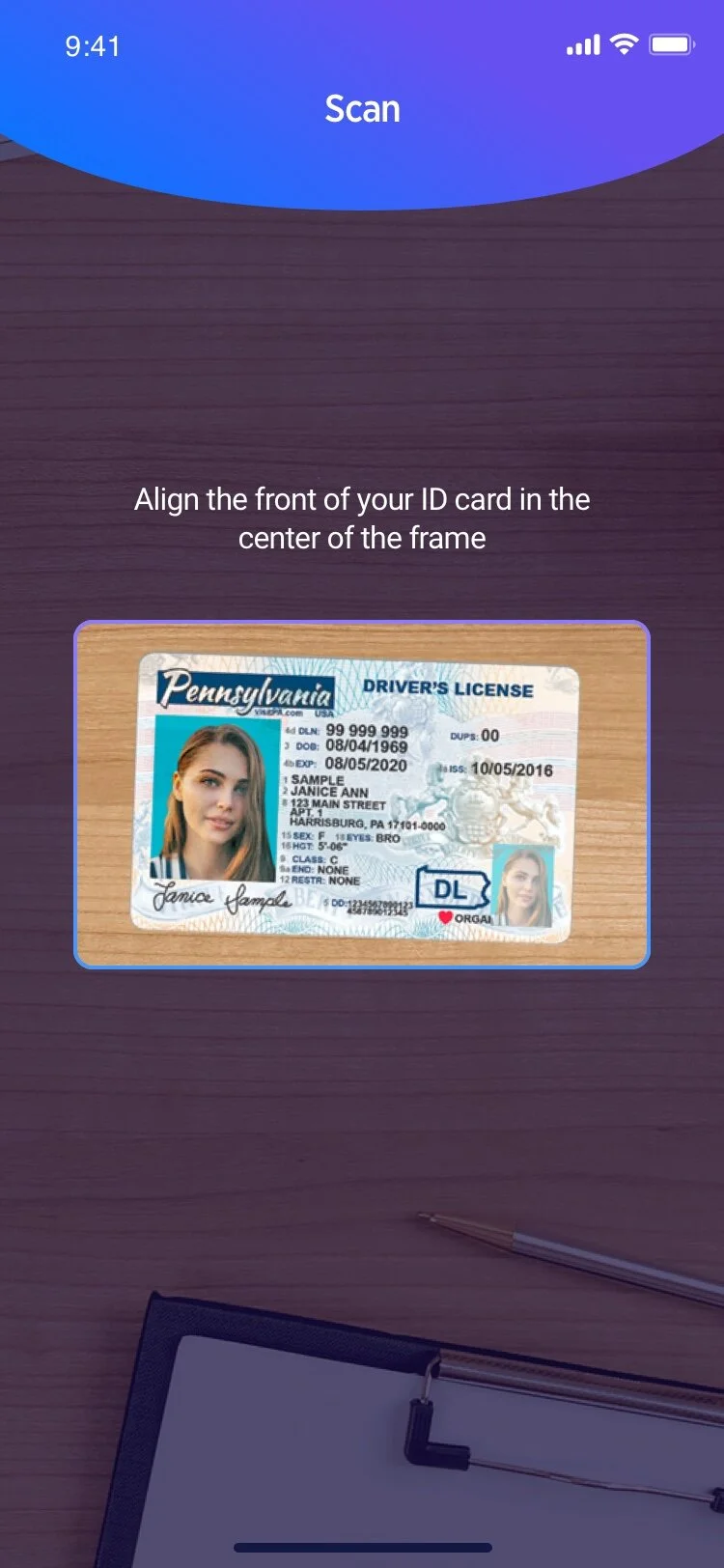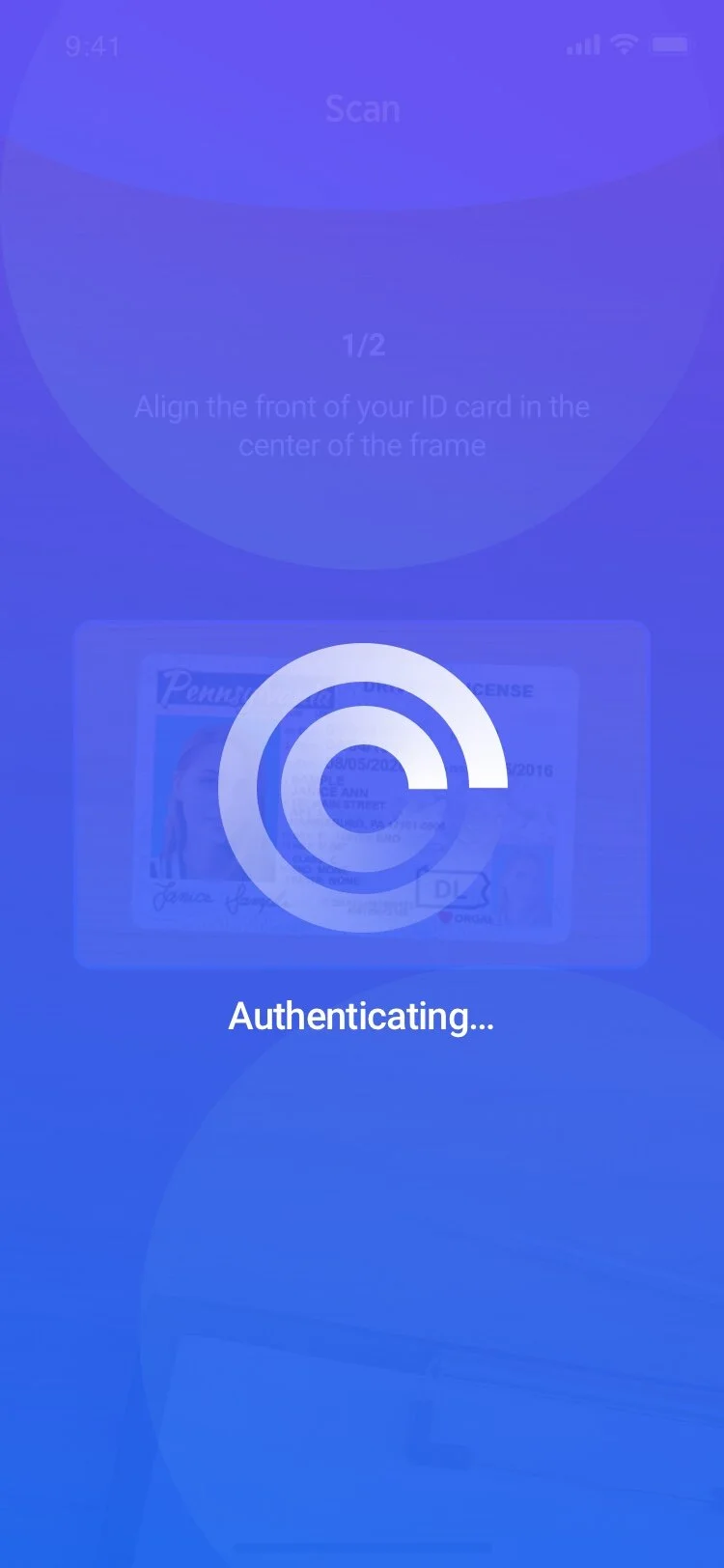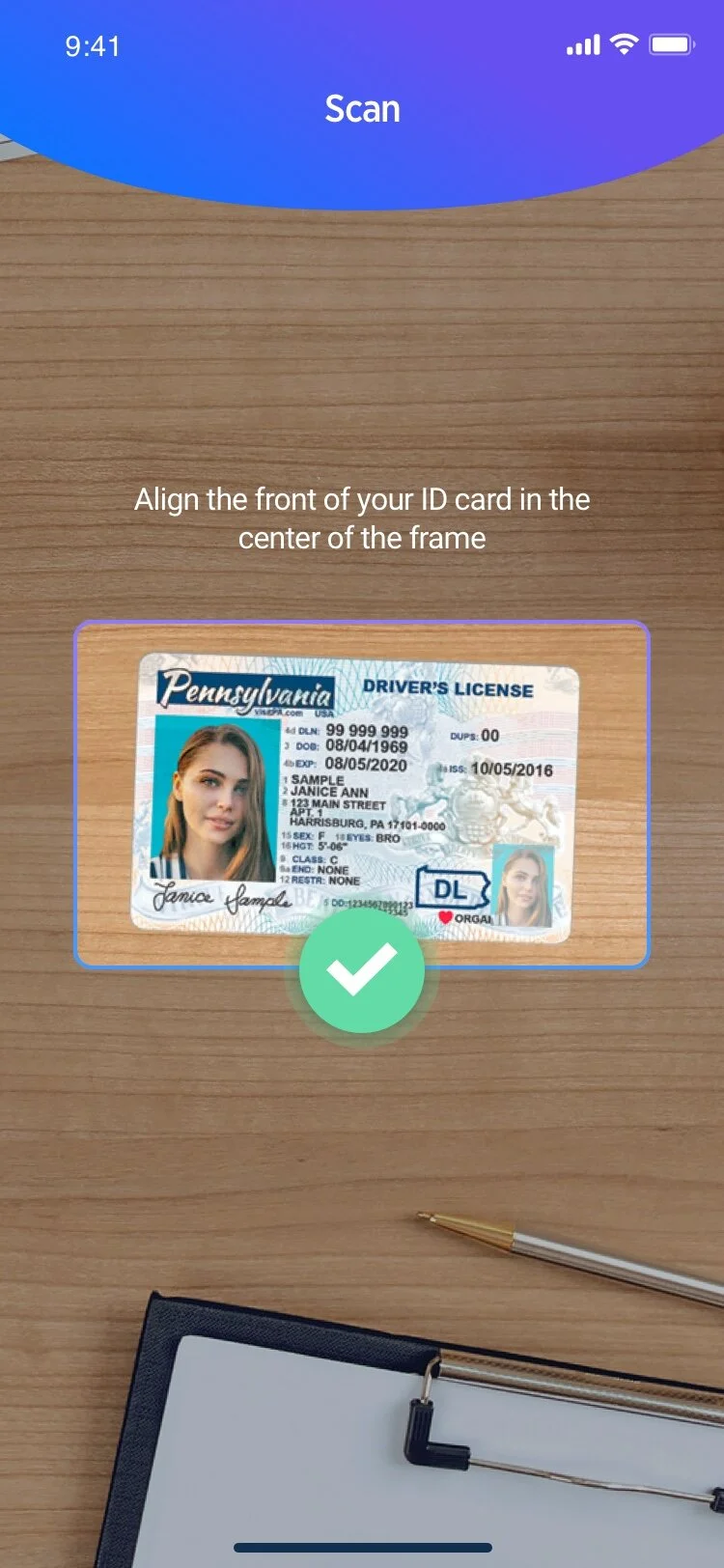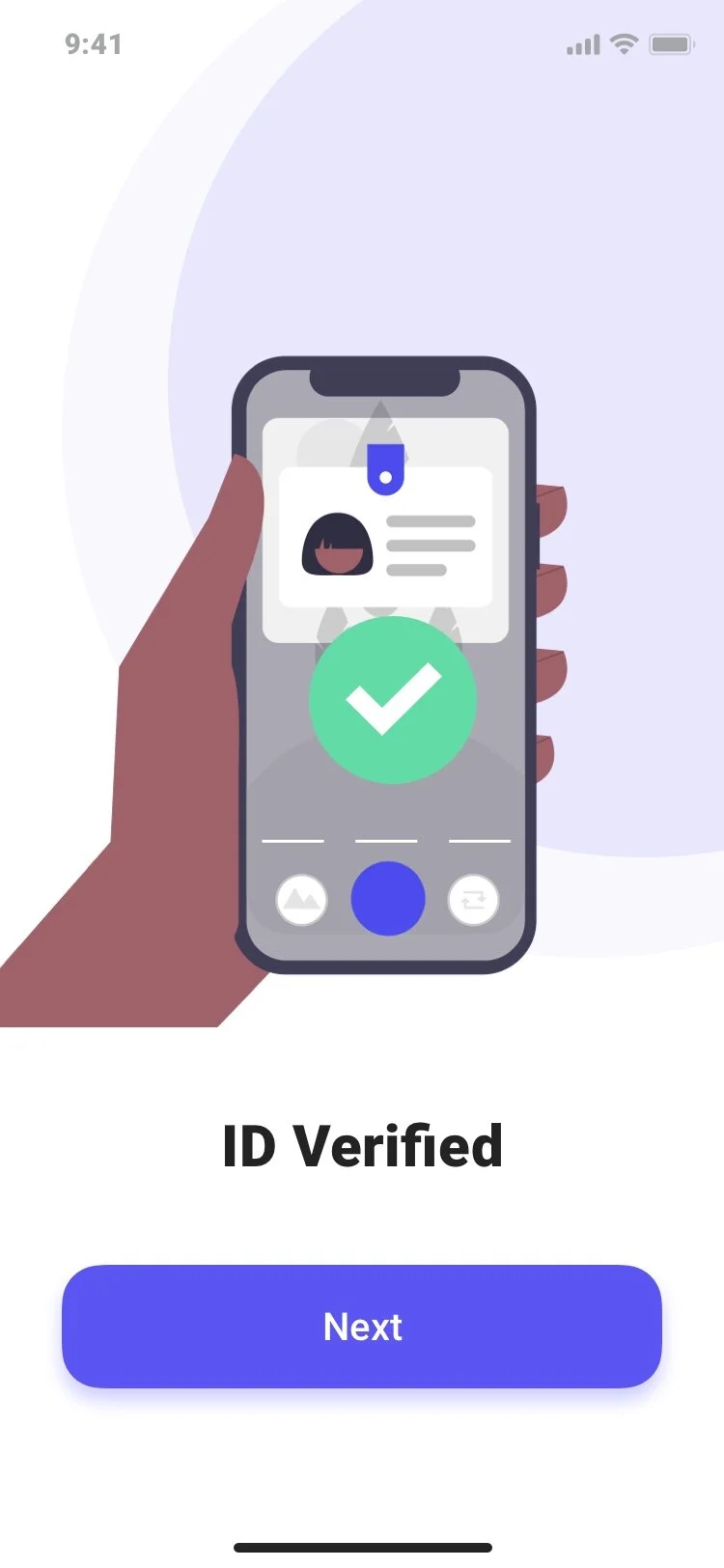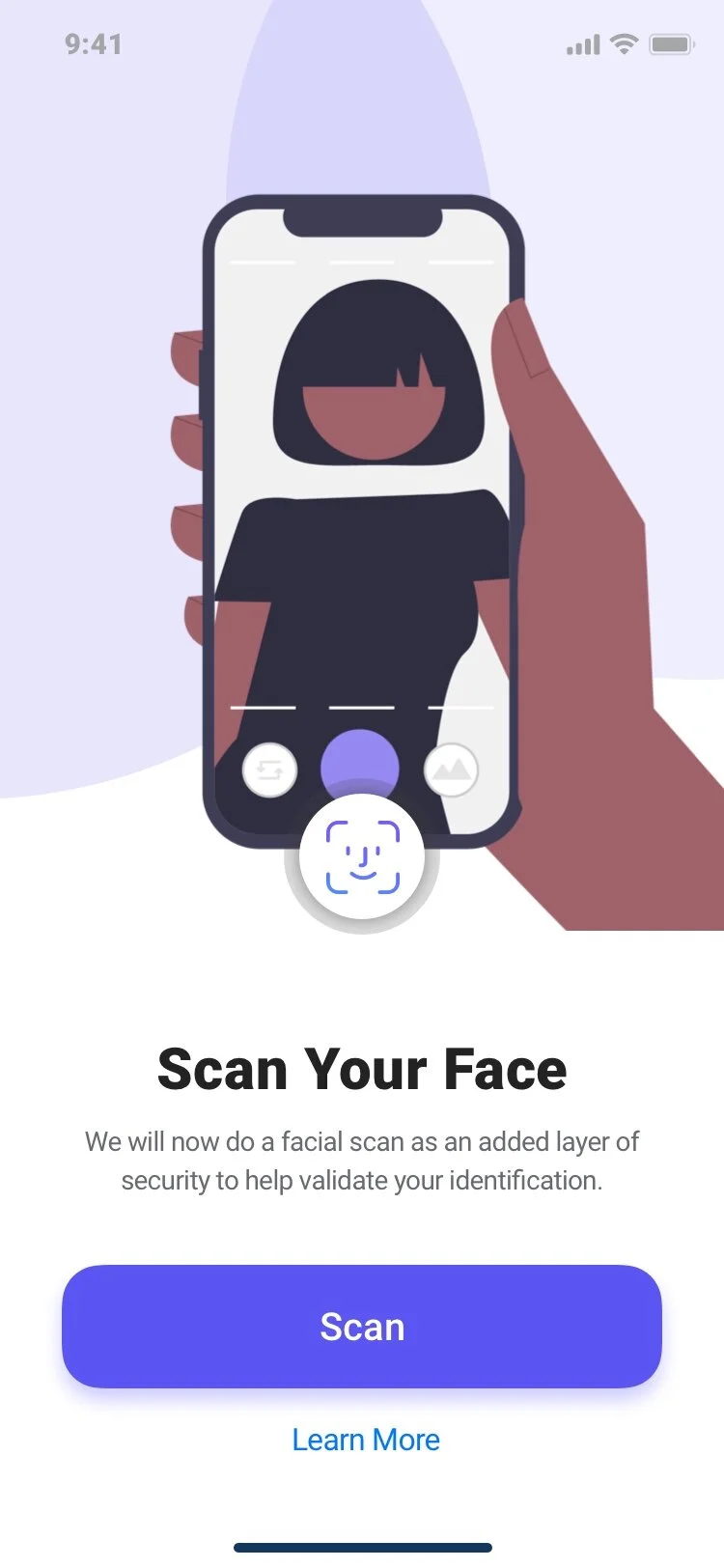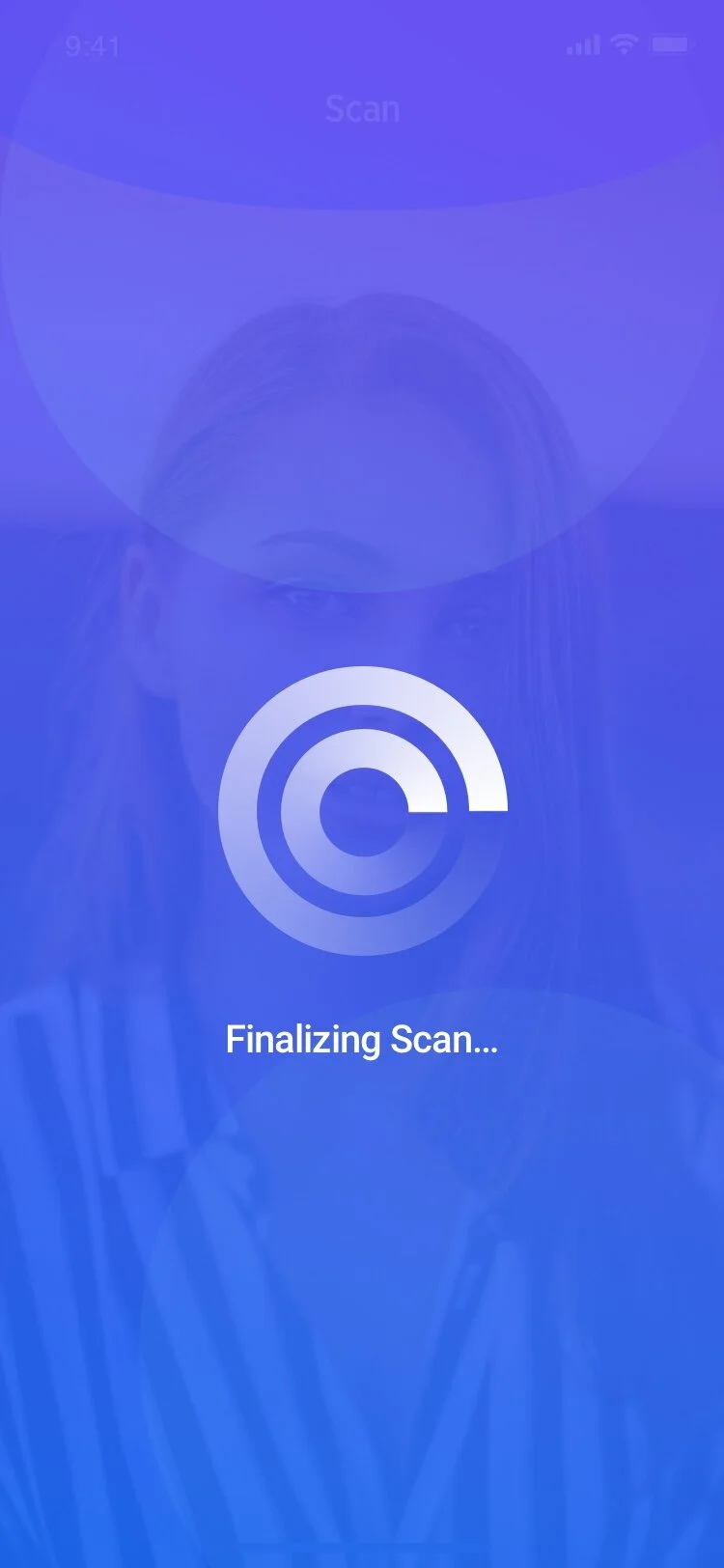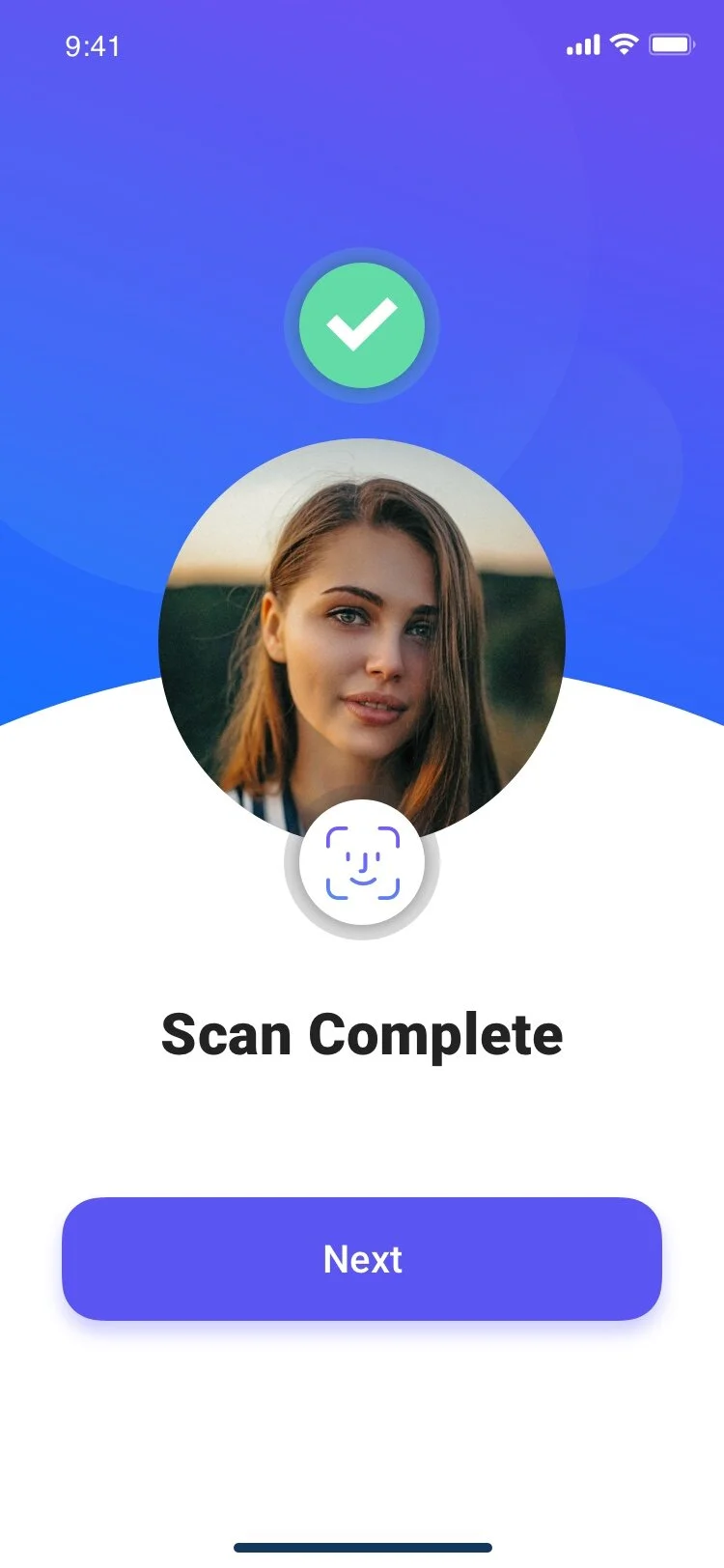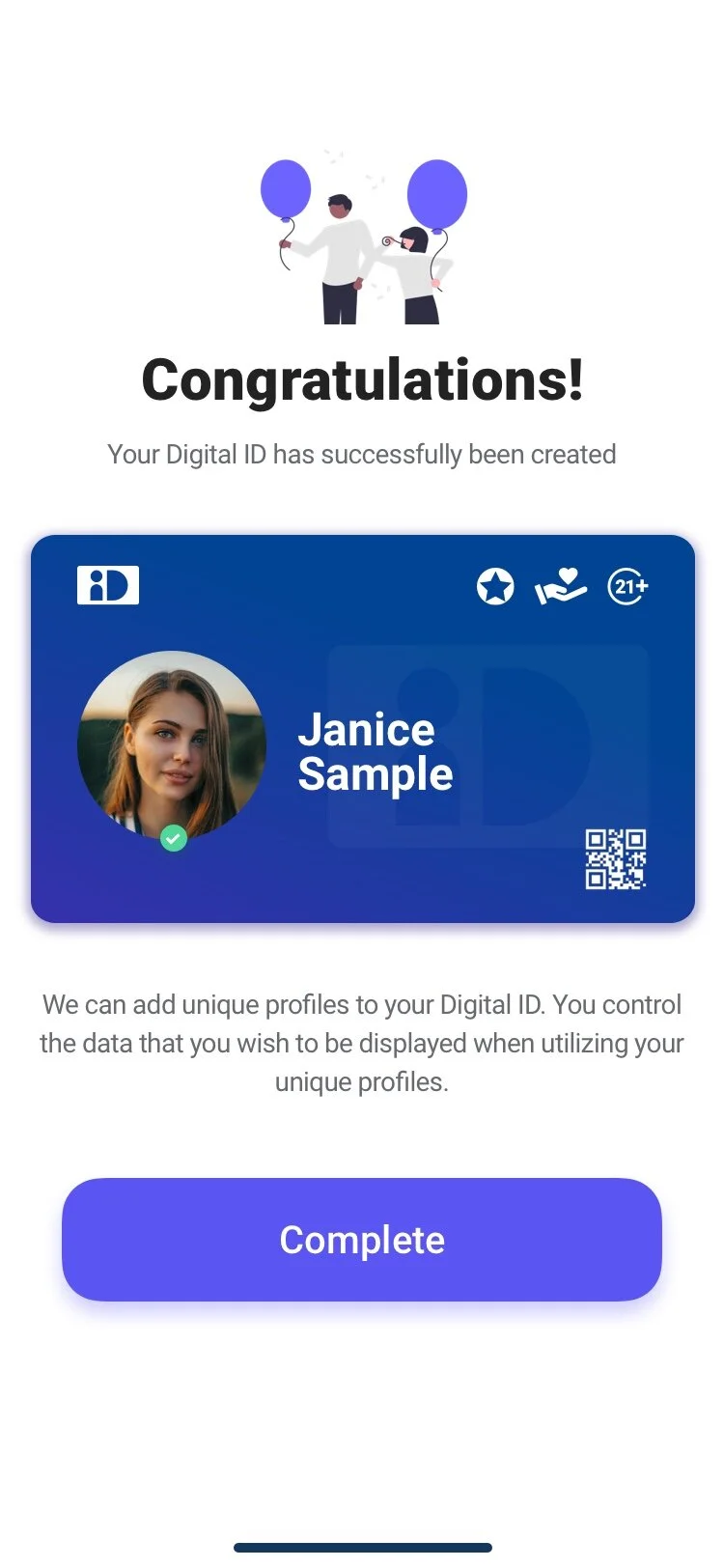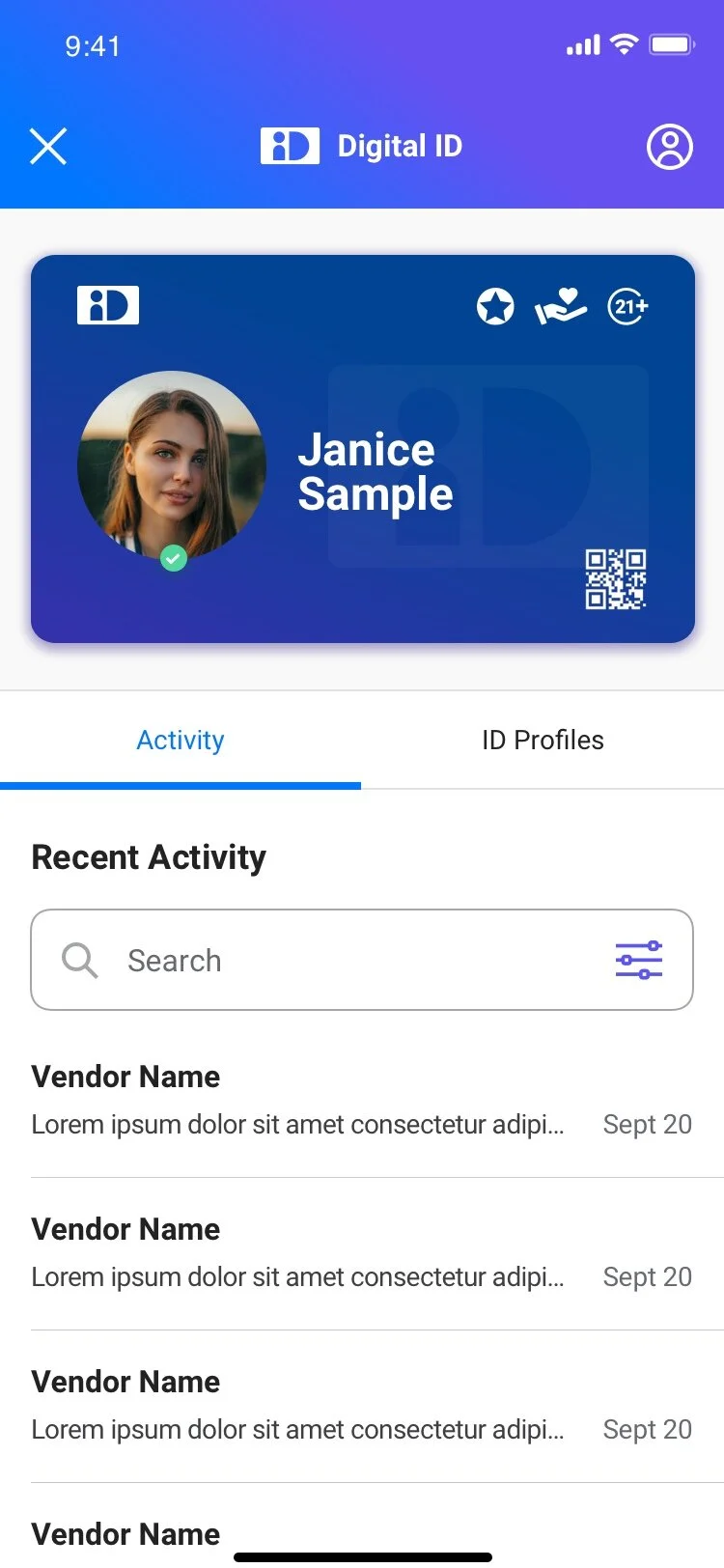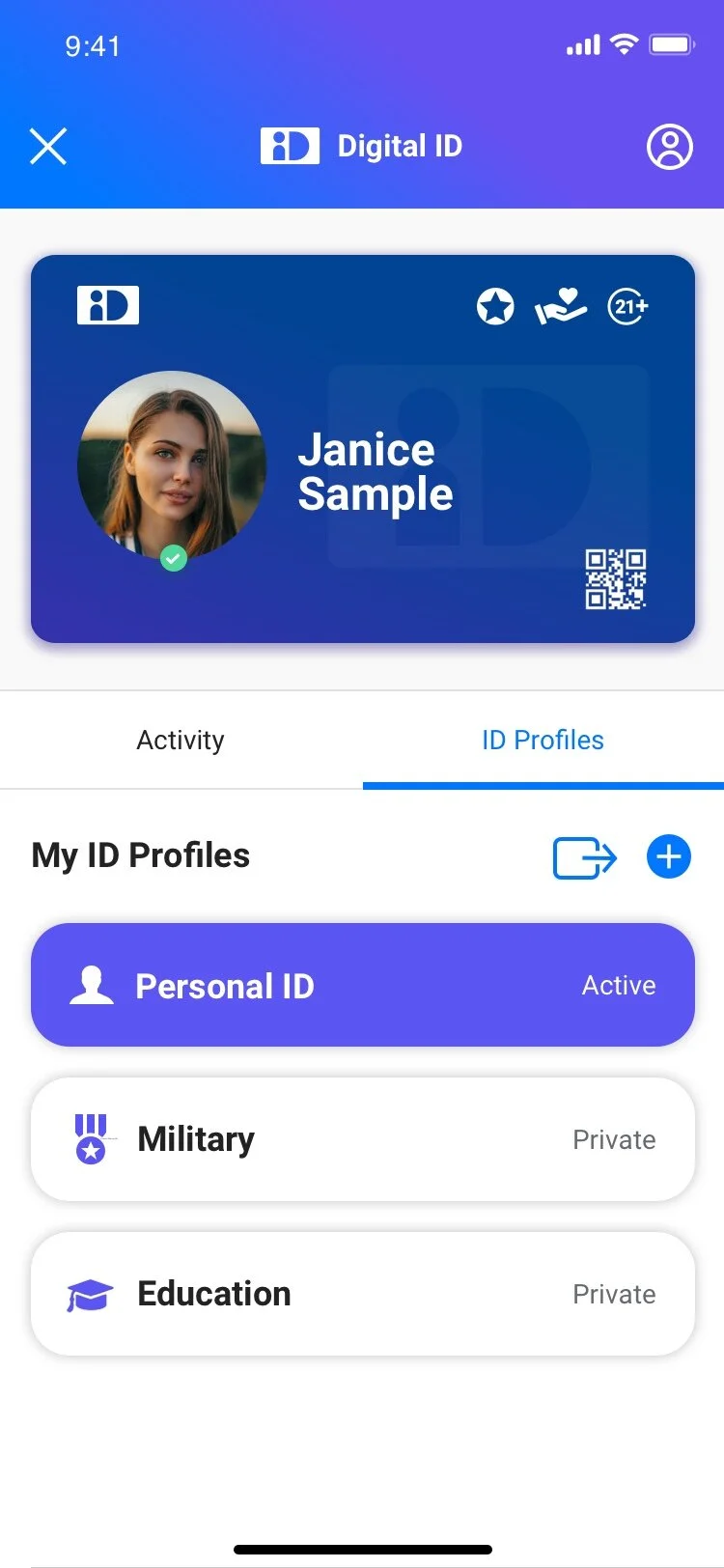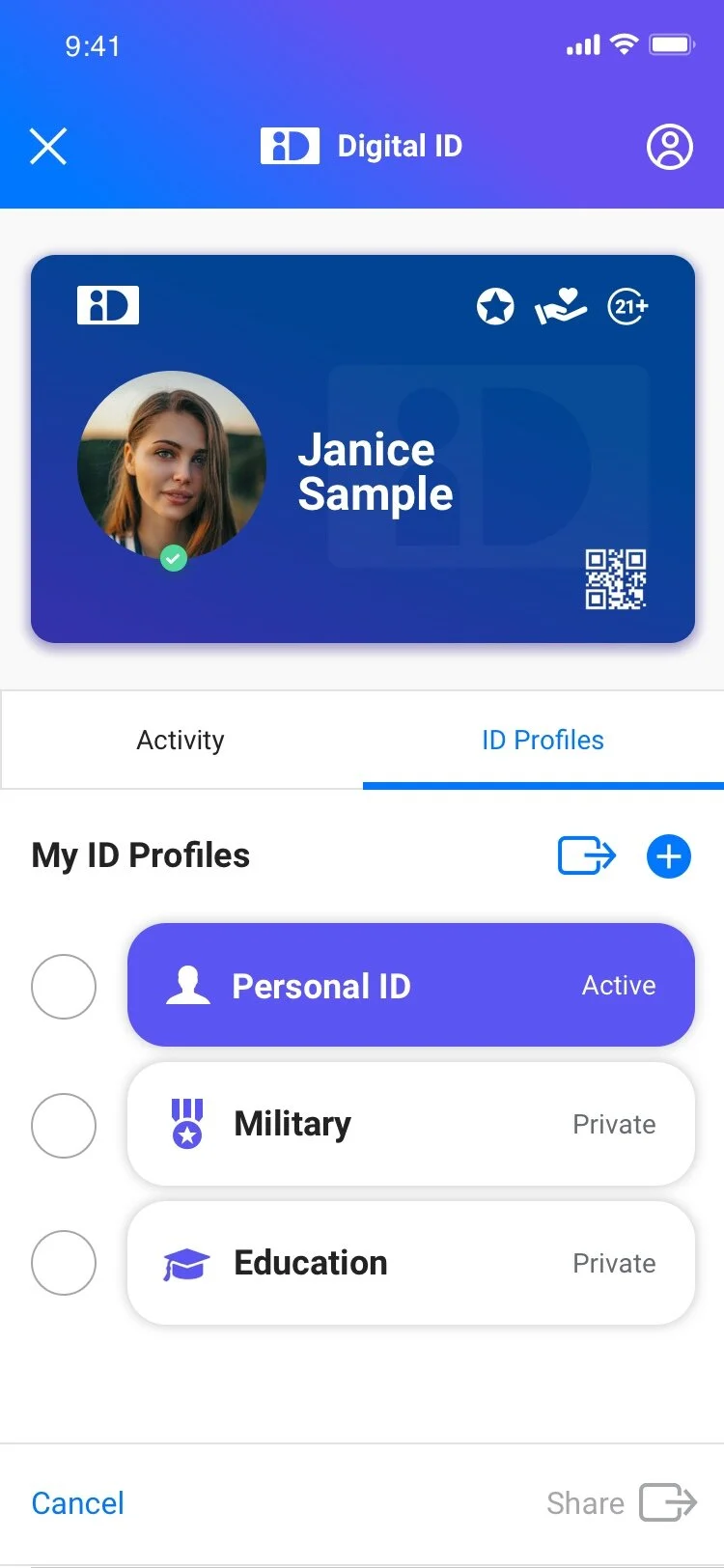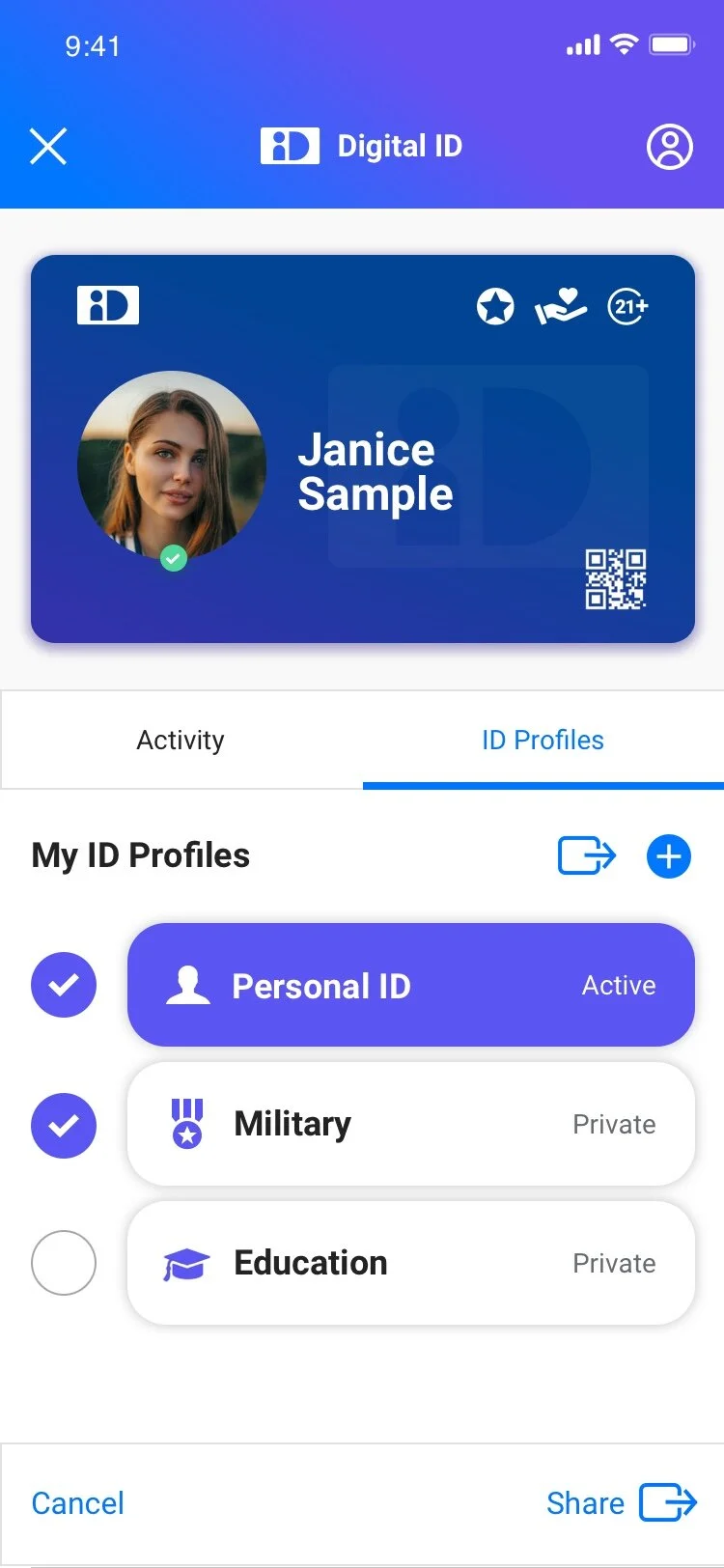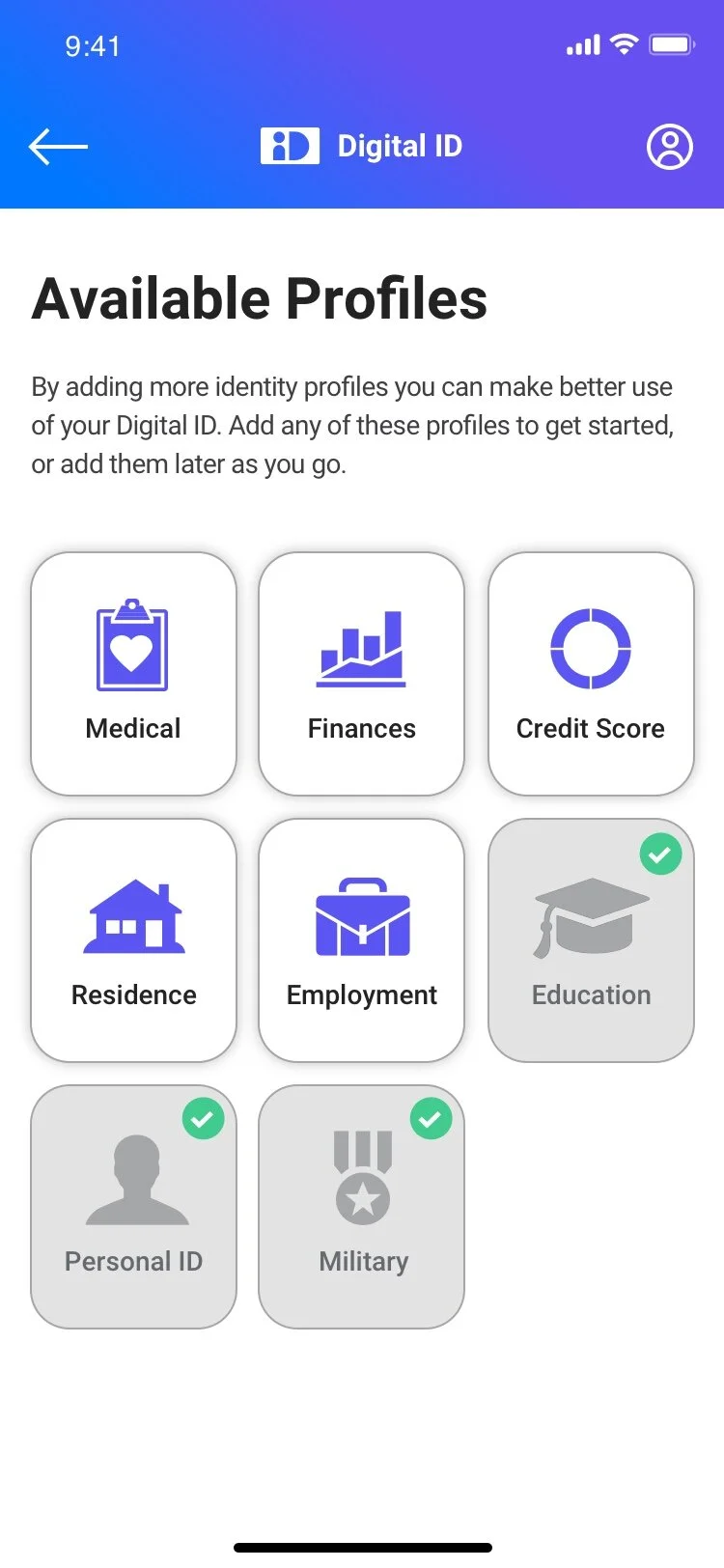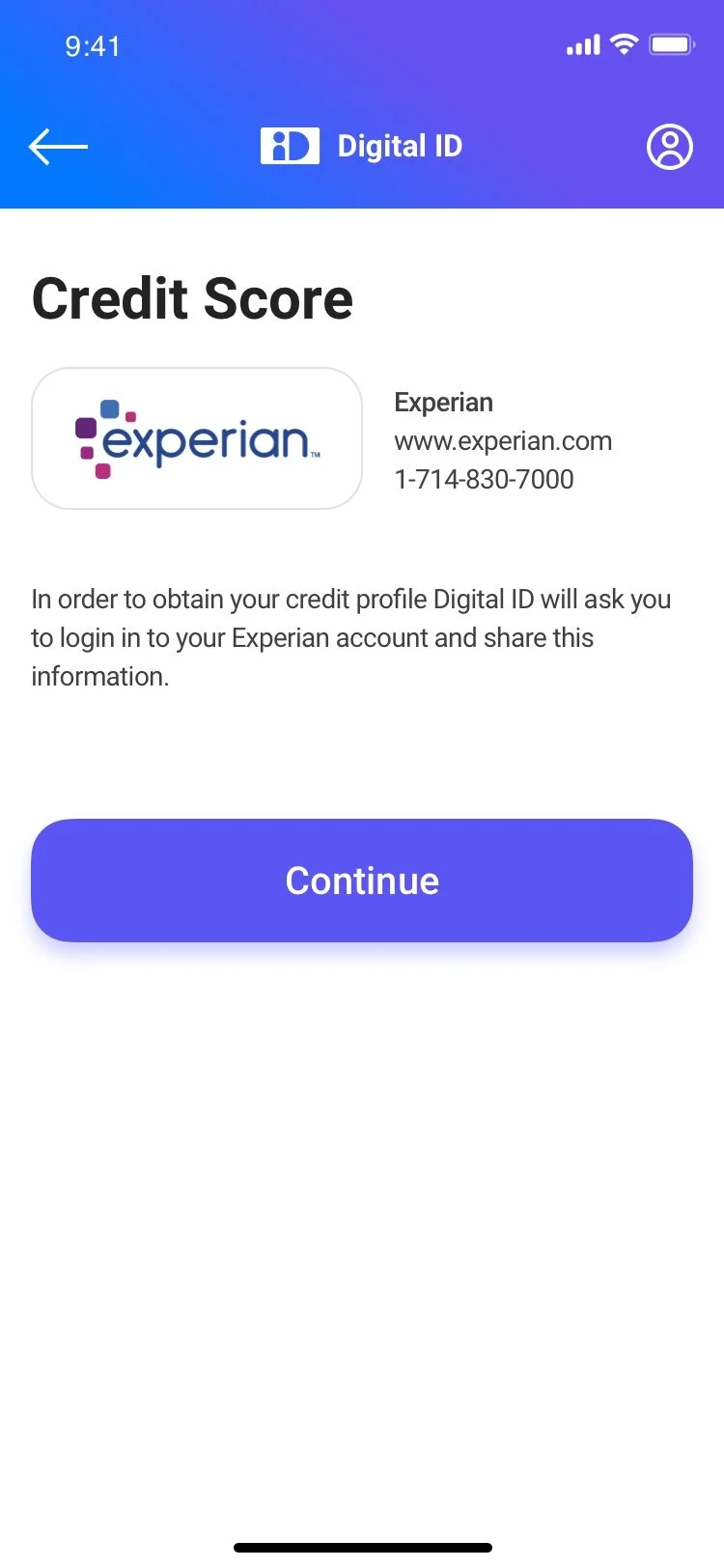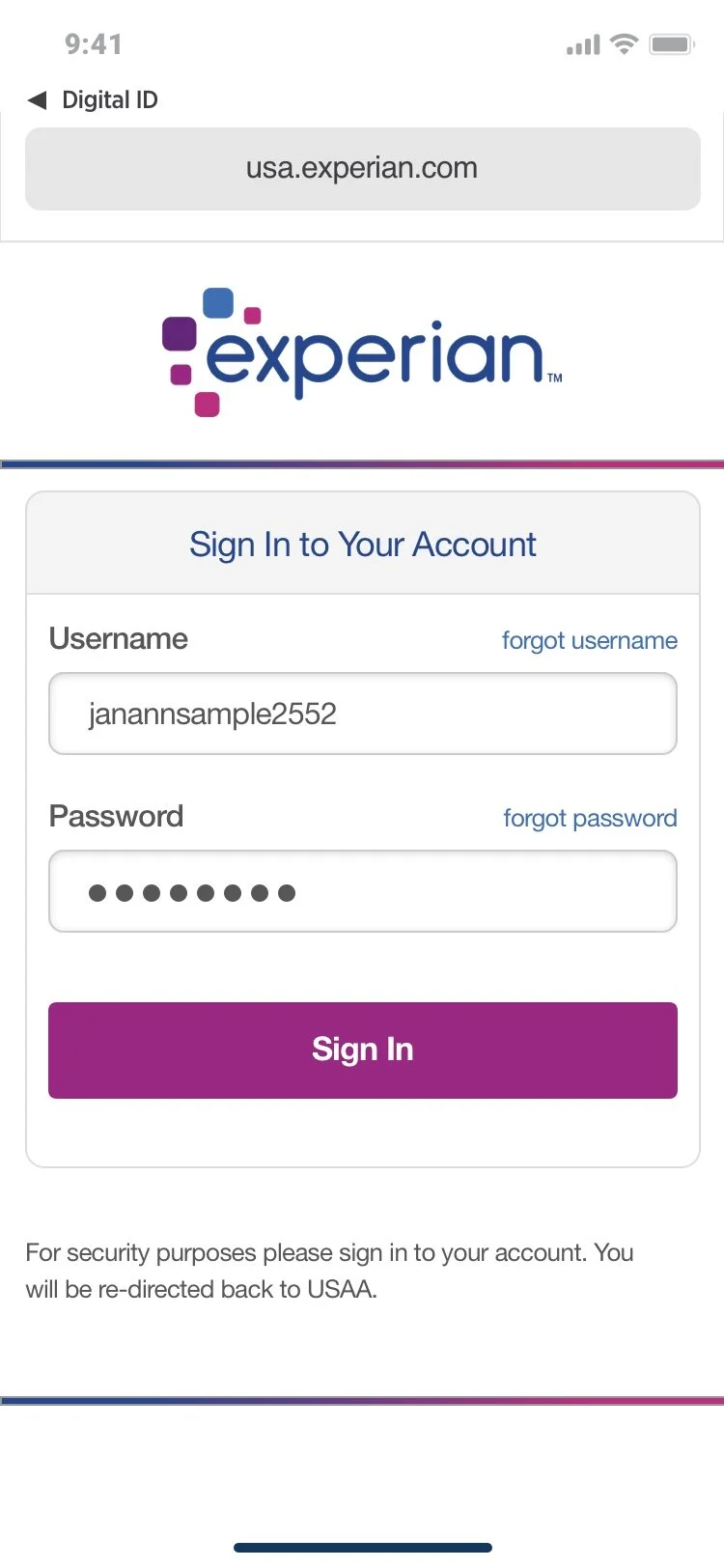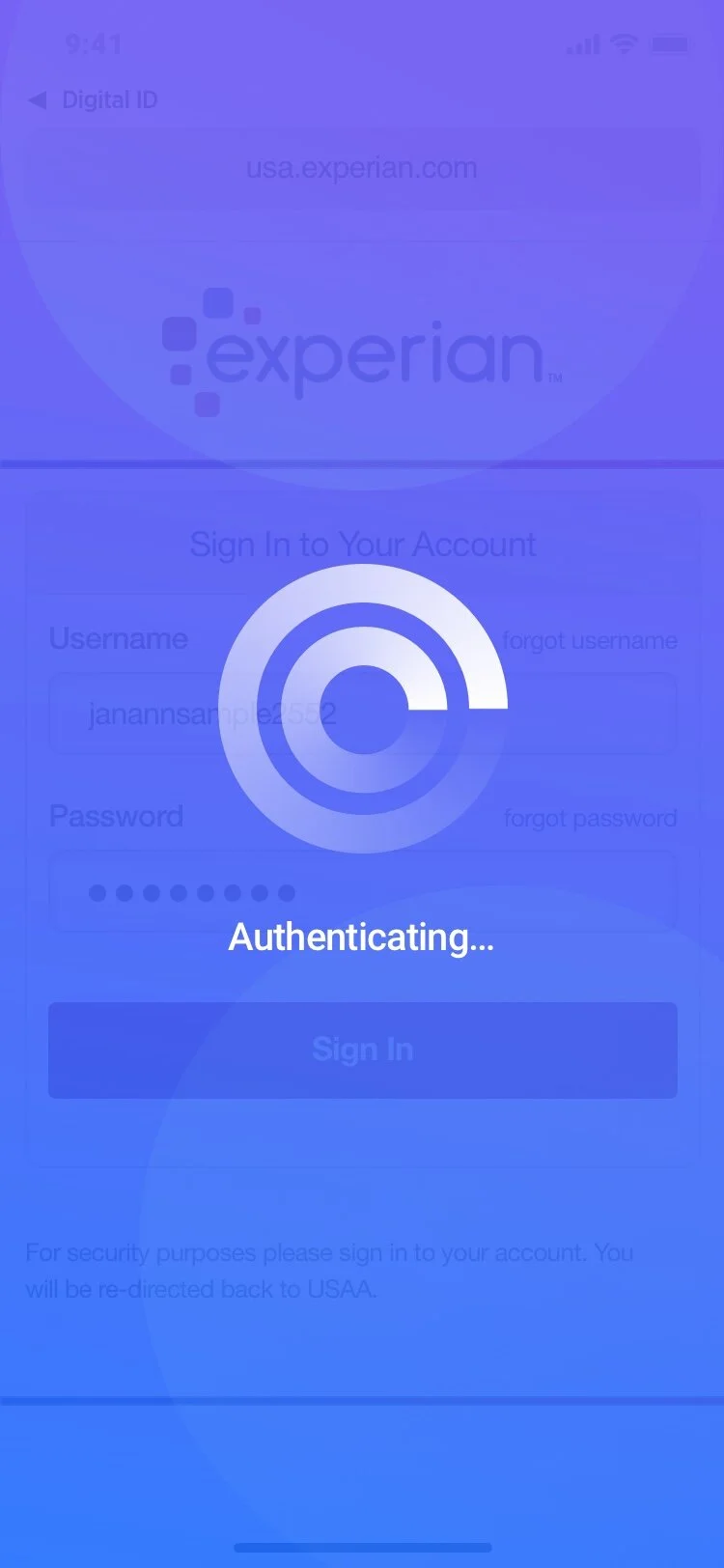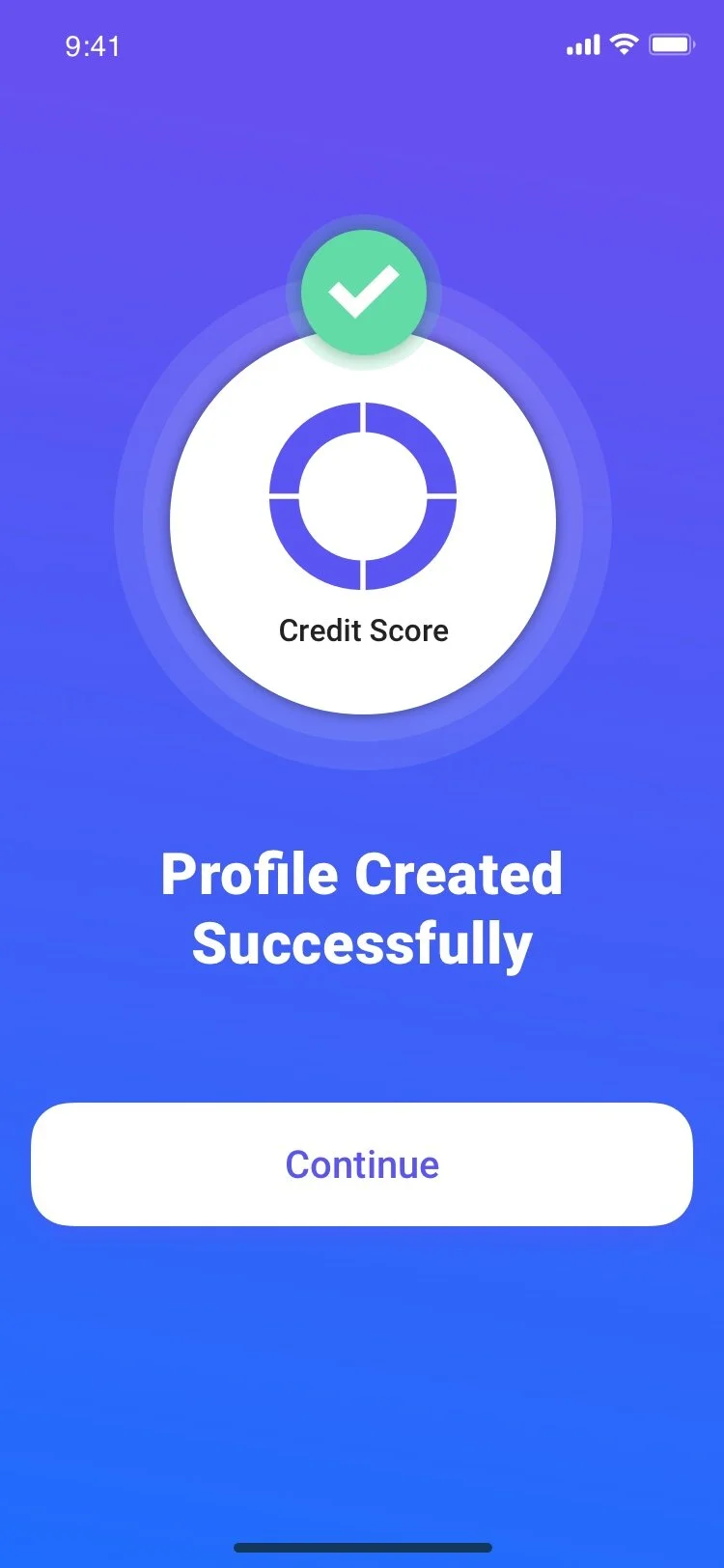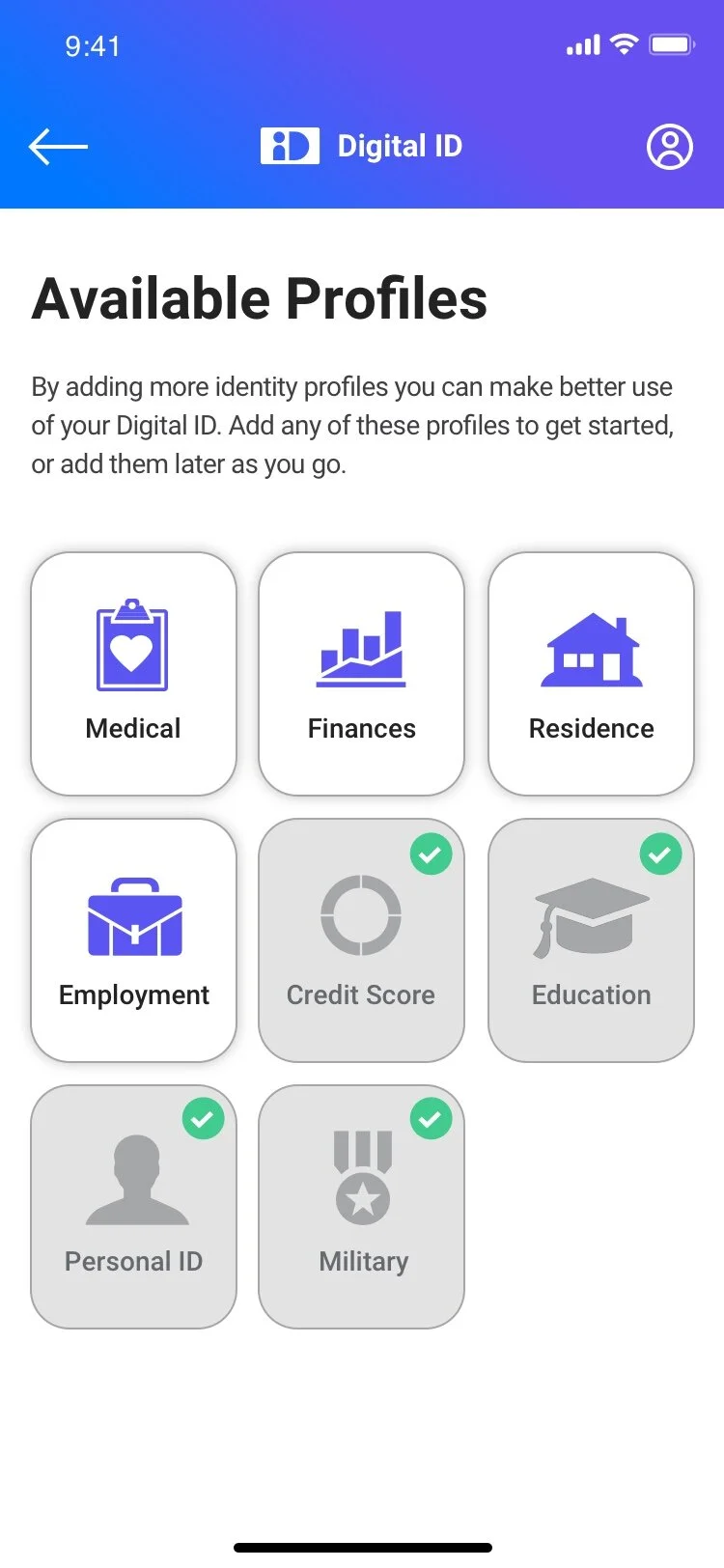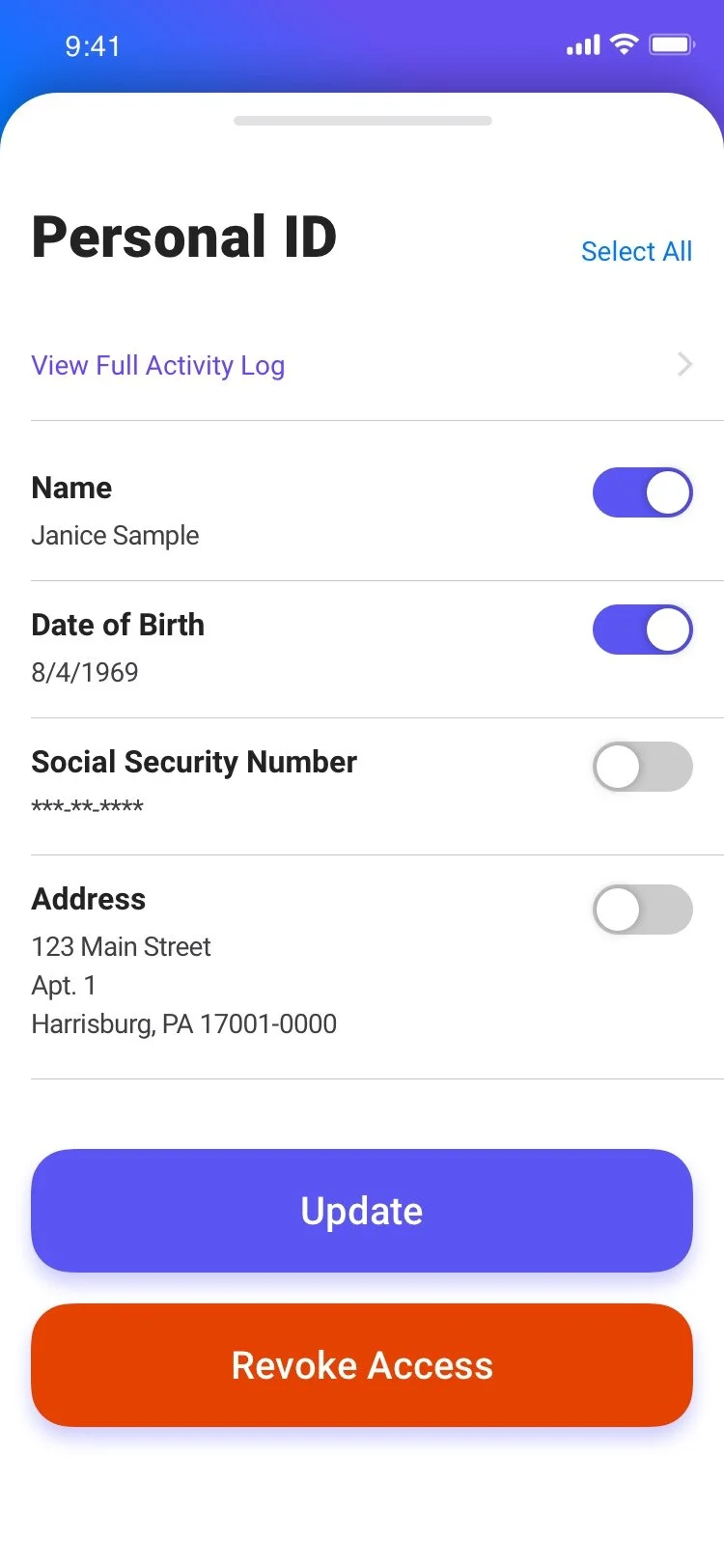At the Center of My ID is Me
Digital ID
Background | Our “Why”
We aspired to craft a product affording individuals enhanced proprietorship and security concerning their data. This involves utilizing blockchain tokens to authenticate identity, alleviating the need to repeatedly input personal information across various systems throughout one's lifetime.
Opportunity & Outcomes
The opportunity for implementing a digital ID application is substantial, driven by the increasing threat of data breaches and identity theft. In 2023, nearly 50% of Americans reported being victims of such incidents. The urgency for personal identifiable information (PII) ownership is heightened, with over 2,100 U.S. organizations reporting data breaches in 2023, surpassing the previous year's figures. This concerning trend is expected to persist.
The digital identity market is on a robust growth trajectory, as Juniper Research forecasts a rise to almost 4.1 billion users by 2027, exceeding the estimated 2.3 billion users in 2023. Contributing factors include the emergence of government-backed digital IDs and the maturation of security measures, encompassing multi-factor authentication and biometrics. Leveraging the blockchain adds an extra layer of security, allowing users to store their PII auditably and verifiably at any time. This not only addresses the critical need for security but positions our product to capture a share of the burgeoning market.
The global digital identity solutions market, valued at USD 27.51 billion in 2022, is projected to expand at a compound annual growth rate (CAGR) of 17.2% from 2023 to 2030, highlighting the significant impact and growth potential of this innovative digital ID application.
Collaboration
Our initial phase involved exploring diverse forms of identification achievable through a decentralized identifier. Subsequently, we assessed which of these could be integrated into a digital ID. To foster collaboration, we utilized whiteboards in our workspace, encouraging designers, developers, and researchers to contribute ideas as they struck. Ensuring cohesion, our cross-functional team worked collectively, maintaining a shared pace and knowledge.
Low-Fidelity
Following extensive discussions and thorough review of the sketches, I promptly shifted focus to the wireframes. These served as valuable tools in our ongoing discussions with business partners, facilitating a nuanced exploration of our user-flow. The wireframes were meticulously crafted using Sketch.
Marketing & Digital Billboard
To amplify awareness of our technology, we established a booth at our Innovation Day event. I crafted a captivating digital billboard utilizing HTML, CSS, and JavaScript, displayed on a large screen TV in an endless loop. The animation featured corporate logos spinning around individuals in the pictures, symbolizing the centrality of our identity.
High-Fidelity
The wireframes provided a foundation for refining the desired user-flow. Transitioning to a higher fidelity, we developed comprehensive compositions in Sketch and a clickable prototype using InVision to articulate our thought process to business partners. I meticulously executed two separate design iterations, resulting in a total of over 70 screens.

